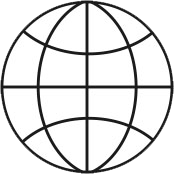
ap

ap
An International Peer Reviewed Research Journal
ANNOUNCEMENTS
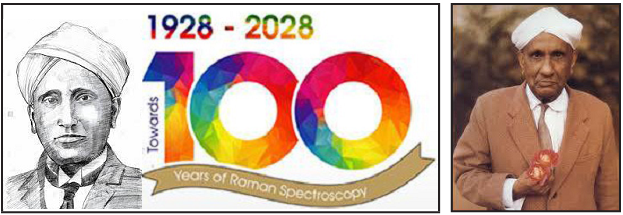
Invitation to Submit a Manuscript
Asian Journal of Physics
(ISSN 0971-3093, http://asianjournalofphysics.in) announces a special issue on
Women in science: Raman spectroscopy
(Vol 31, No 2, Feb 2022)
As well-known, in 1922-23 Compton, Smekal, and Brillouin, independently reported results on wavelength shifted scattering, and in 1928, Sir C. V. Raman and K. S. Krishnan announced the discovery of inelastic light scattering in the visible region, known as the Raman effect.
This special issue is in recognition of outstanding achievements and contributions to Raman spectroscopy over many years by women scientists.
We invite you to submit a manuscript to this special issue. Please respond not later than August 1st, 2021, whether or not you intend to submit a manuscript.
Submission of the manuscript should be not later than October 29, 2021. Also review papers are welcome.
Refereeing of submitted manuscripts will be performed according to the normal AJP process and you are welcome to nominate up to four potentially suitable referees for your manuscript at the time of its submission. Best Paper of the issue will be given V N Rastogi Best Paper Award for US $ 100.00
Publication of the Special Issue in AJP is planned for first half of 2022.
We are looking forward to hearing from you soon with your positive intention to submit an invited manuscript for this Special Issue.
With best wishes,
Guest Editors for AJP (Vol 31, No 2, Feb 2022):
Professor Giulietta Smulevich: giulietta.smulevich@unifi.it
Professor
Wolfgang Kiefer: wolfgang.kiefer@uni-wuerzburg.de
Asian Journal of Physics (ISSN 0971-3093) Vol
30, No 1, January 2021 will be an Special
issue
on
Plasma Physics, Solar Energy, Optics and Photonics and Education Management
Dedicated to
Prof Mahendra Singh Sodha
F.N.A.
Former Professor of Physics and Dy. Director at IIT Delhi
Former Vice Chancellor of Devi Ahilya Vishwavidyalaya Indore, Barkatullah University Bhopal and Lucknow University
Guest Editors
Bishnu Pal and Rajpal Sirohi
Besides select invited articles, this special issue is open for submission of contributory and review papers on (but not limited to)
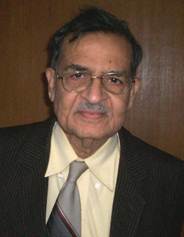
Prof. Mahendra Singh Sodha popularly known as Prof M. S. Sodha has a distinguished record of achievements in the fields of educational management, scientific research, industrial consultancy and teaching; he has the distinction of serving three universities viz. Devi Ahilya Vishwavidyalaya Indore, Lucknow University Lucknow and Barkatullah University Bhopal as Vice-Chancellor. He has also worked as Director of two self-financed engineering/management institutes. Prof. M. S. Sodha has also served Indian Institute of Technology Delhi in various capacities, including Professor, Head of Department, Dean Post Graduate Studies and Deputy Director; he was also a Member of the Board of Governors for a term.
Besides extensive research at national and international level and
teaching at the undergraduate and postgraduate levels, Prof Sodha
has worked as Chief of Space Physics at Republic Aviation
Corporation, New York, U.S.A.; Senior Physicist at Armour Research
Foundation, Chicago, USA and Visiting Scientist at the Solar Energy
Research Institute, Golden Colorado, USA and Kuwait Institute of
Scientific Research, Kuwait. He has also worked as Chief Technical
Advisor with the World Bank/Cyprus Government and as a full-time
consultant with UNESCO on Energy Planning and Conservation. He has
also been a consultant to UNDP, Swedish Industrial Development
Agency, Planning Commission and Solar Research Institute,
U.S.A. Prof. Sodha has served the University of British
Columbia, Vancouver, Canada as a PDF, Visiting Professor at Drexel
University, Philadelphia, USA and Senior Research Associate at
NASA, Hampton, Va, USA.
He is a recipient of several prestigious awards like S. S.
Bhatnagar Award given by CSIR for Physical Sciences in 1974,
‘Pioneer in Renewable Energy’ award by World Renewable Energy
Network and UNESCO in 2002 and Dr. K. S. Rao Memorial national
award for lifetime achievement in renewable energy by SESI in 2004.
He is one of the two first recipients of Saraswati Samman conferred
by the U.P. Government. Besides being a Fellow of the Indian
National Science Academy (INSA), New Delhi and the National Academy
of Sciences (NASI) India, Allahabad, he has been President of the
Optical Society of India, President of Plasma Society of India and
Vice-President of Energy Society.
Prof. M.S. Sodha is credited with having guided 75 candidates up to successful completion of their Ph.D. programme. In addition, he has authored/edited 15 books which were published by internationally reputed publishers like Plenum, Pergamon, Springer, John Wiley, etc. Most recent one was Kinetic of Complex Plasmas (Springer series in Atomic, Optical and Plasma Physics, 2014). He has also published over 625 research papers including 14 reviews in international journals/monographs/books of repute. He is credited of having coined the term colloidal plasma for a special type of plasma. In addition, he has published 30 articles on different aspects of higher education.
The honor of Padmashri was conferred on Prof. Sodha by President of
India in 2003. He has been Chief Guest at the Convocation
ceremonies of Agra University and Kanpur
University.
As a visionary, he has been extremely quick in identifying/realizing the importance of an emerging field and would either pursue the same or motivate a close and younger colleague to pursue the same. That is how research on guided wave optics for optical communication and Biophotonics had begun at IIT Delhi almost from its nascent days in early to mid-1970s. He was quick to realize the importance of introducing research in non-conventional energy when the oil crisis began in 1973 and took significant initiative for the establishment of the Center of Energy Studies at IIT Delhi in 1976 as a national center.
Asian Journal of Physics (ISSN 0971-3093) announces a special issue on
Optics and Photonics
To be dedicated to
80th birthday November 9 2019
of
Eminent Scientist and Scholar Prof Ajoy Ghatak
M N Saha Chair Professor of INSA and former Professor of Physics at IIT Delhi
Guest Editor
Bishnu Pal
Besides select invited articles, this special issue is open for submission of contributory and review
papers on (but not limited to)
Professor Ajoy Ghatak is an eminent Indian scientist and a teacher
per excellence on Optics and Photonics and celebrated former
Professor of Physics at IIT Delhi, who is known all over the world
for his significant research work on photonics, fiber optics and
education in India and for his lucidly written outstanding books on
Optics, Lasers, Quantum Mechanics and Relativity. Professor Ghatak
has created a legacy of pride for the country and is commended as
“one of the most eminent scientists in Optics and Photonics in
general of all times in India”. Professor Ghatak was born on
November 9, 1939 at Lucknow. He received his MSc from Delhi
University and PhD from Cornell University USA. After a short stint
as a Research Associate at the Brookhaven National
Laboratory, USA, Professor Ghatak joined the Indian Institute
of Technology, Delhi in 1966, where he remained a full Professor of
Physics since 1973 till his retirement. Professor Ghatak has
more than 170 research papers to his credit in
various International journals and more than 20
books.
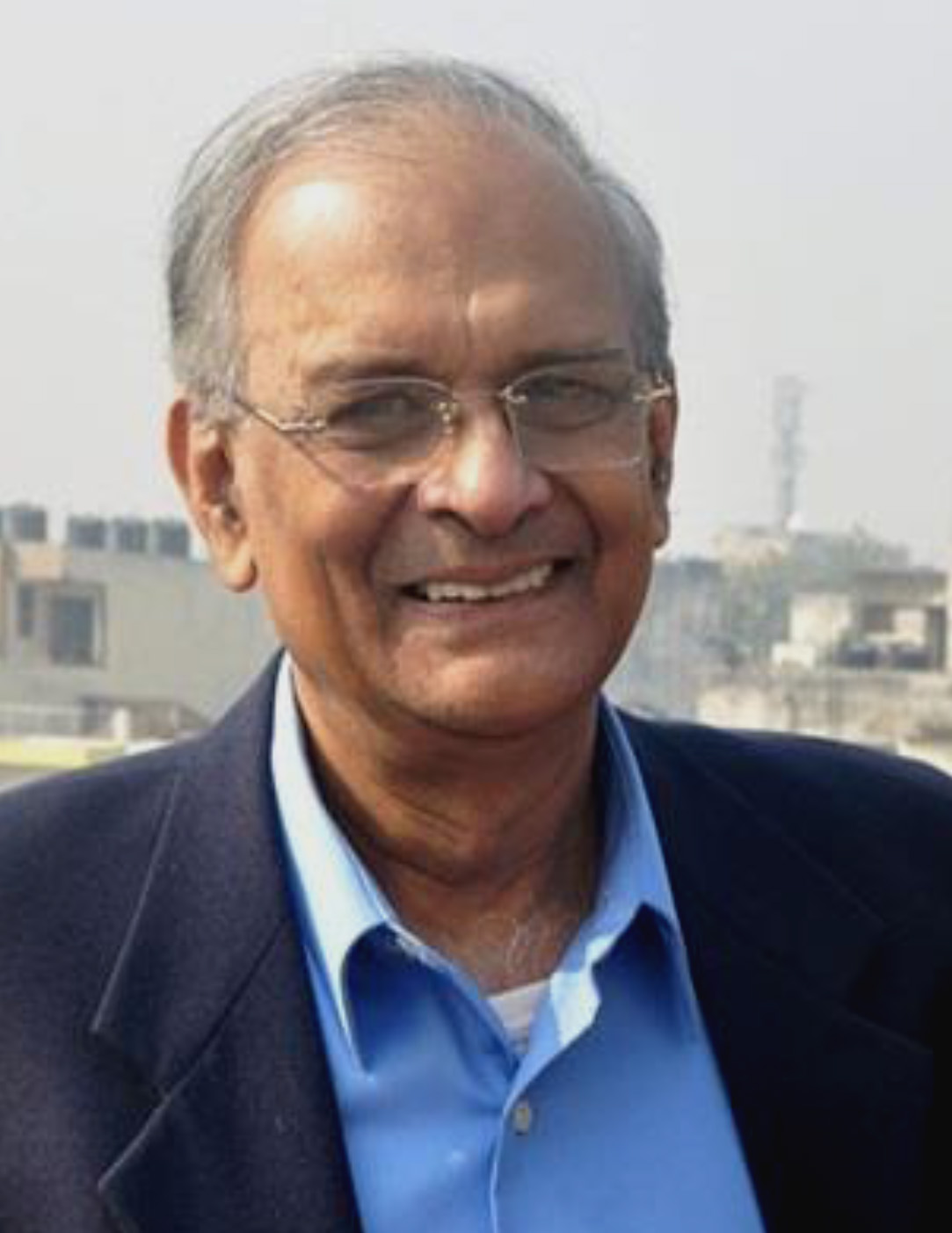
His
book on Optics (translated into Chinese and Russian also) is very
extensively used all over as a text in undergraduate teaching and
in addition one on Fiber Optics, and another on Optical
Electronics, and one on Quantum Mechanics are also very widely used
for senior UG and PG courses as texts in these subjects. His
research contributions have been recognized through his induction
as a Fellow of OSA The Optical society, SPIE, NASI, OSI, and
numerous international and national prestigious awards like SSB
award of CSIR, Galileo Galilei award of ICO, EHB Medal of OSA, SPIE
Educator award and MN Saha award of UGC. As a current M N Saha
Chair Professor of INSA he continues to contribute tirelessly and
significantly to the progress and dissemination of knowledge in
Optics, Photonics, and Quantum Physics. Even at his late-70 age, he
can be seen frequently travelling to various colleges, institutions
far-and-wide across the country to deliver tutorial level talks and
also to disseminate knowledge on contributions made by Indian
Scientists to motivate generation X students to take up teaching
and research as a profession. He has published several popular
science level books on Albert Einstein based on his personal
research on Einstein’s monumental and iconic research. One of
Prof Ghatak’s seminal contributions in Guided Wave Optics has been
his analysis and work on the physics of leaky modes in optical
waveguides in a single-authored paper that had appeared in the
Springer journal: Optics and Quantum Electronics in its September
1985 issue. This work eventually led to development of a Matrix
method (IEEE J. Lightwave Tech. May 1987) for treating optical
waveguides (and also optical fibers), which became an extremely
powerful research tool for designing a variety of guided wave
components and specialty optical fibers. This method found
extensive use by others researchers including Prof
Ghatak himself in numerous international journal
publications on optical waveguide and fiber designs for
realization of components thereof including quantum
well devices.
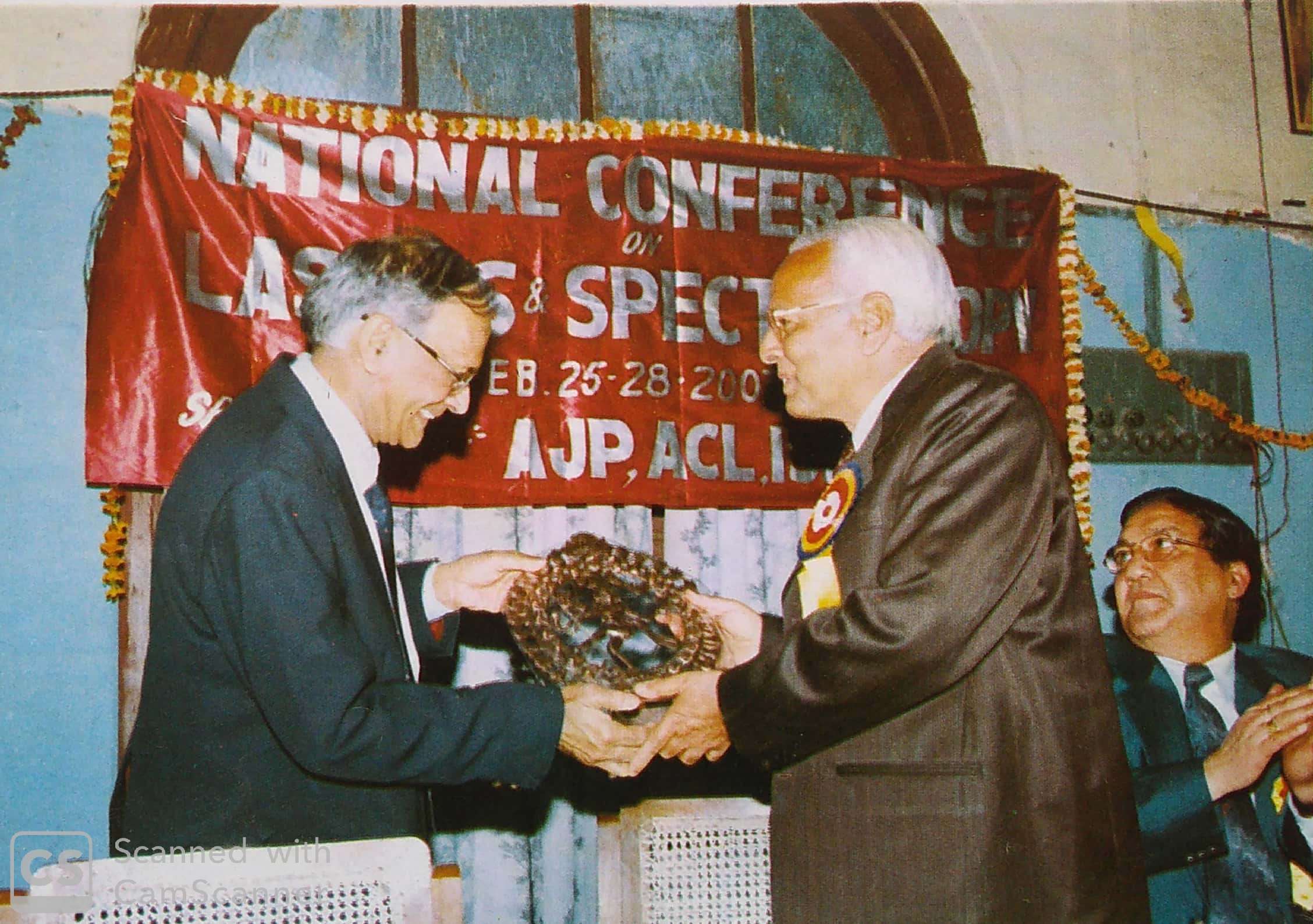
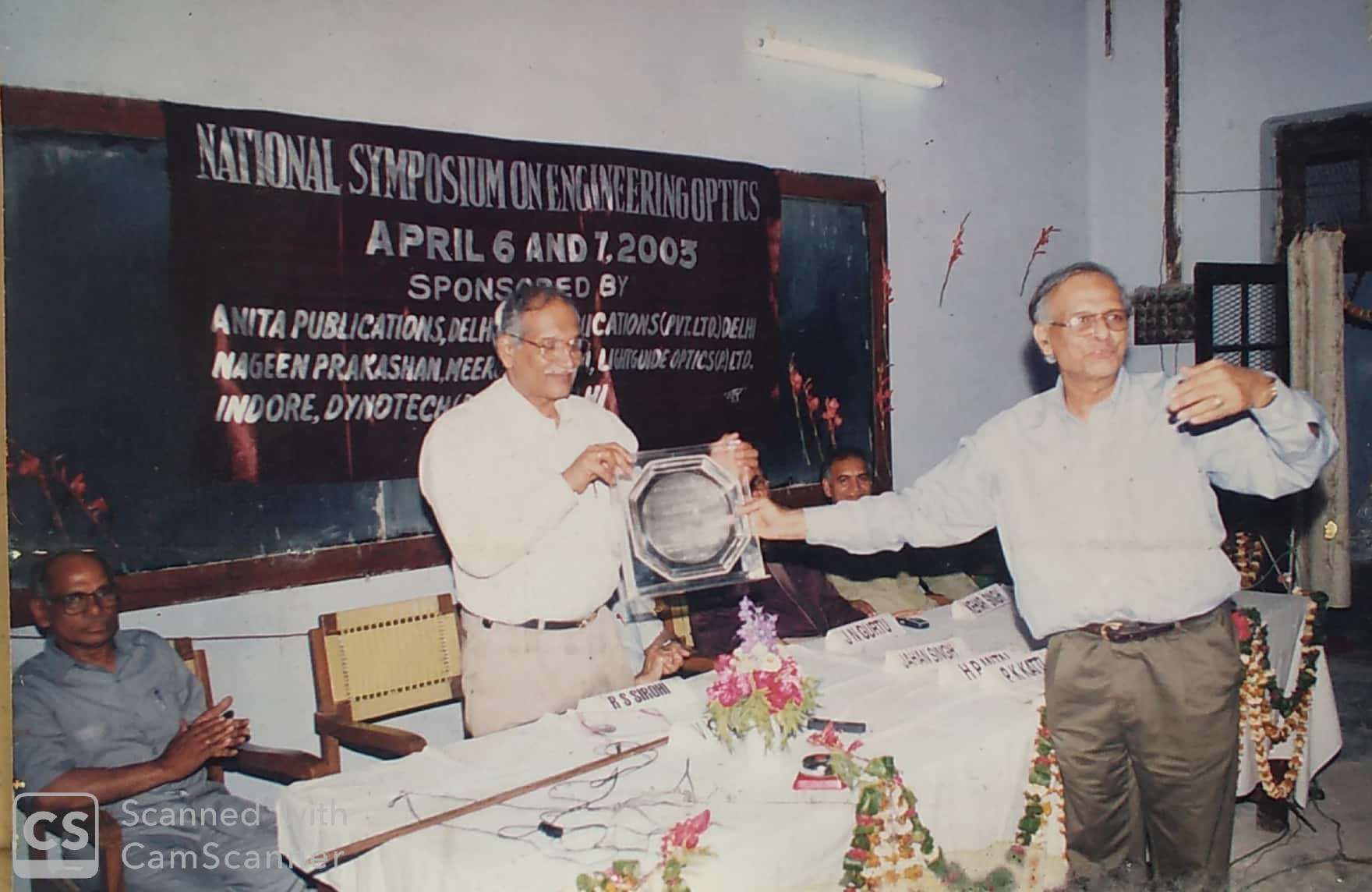
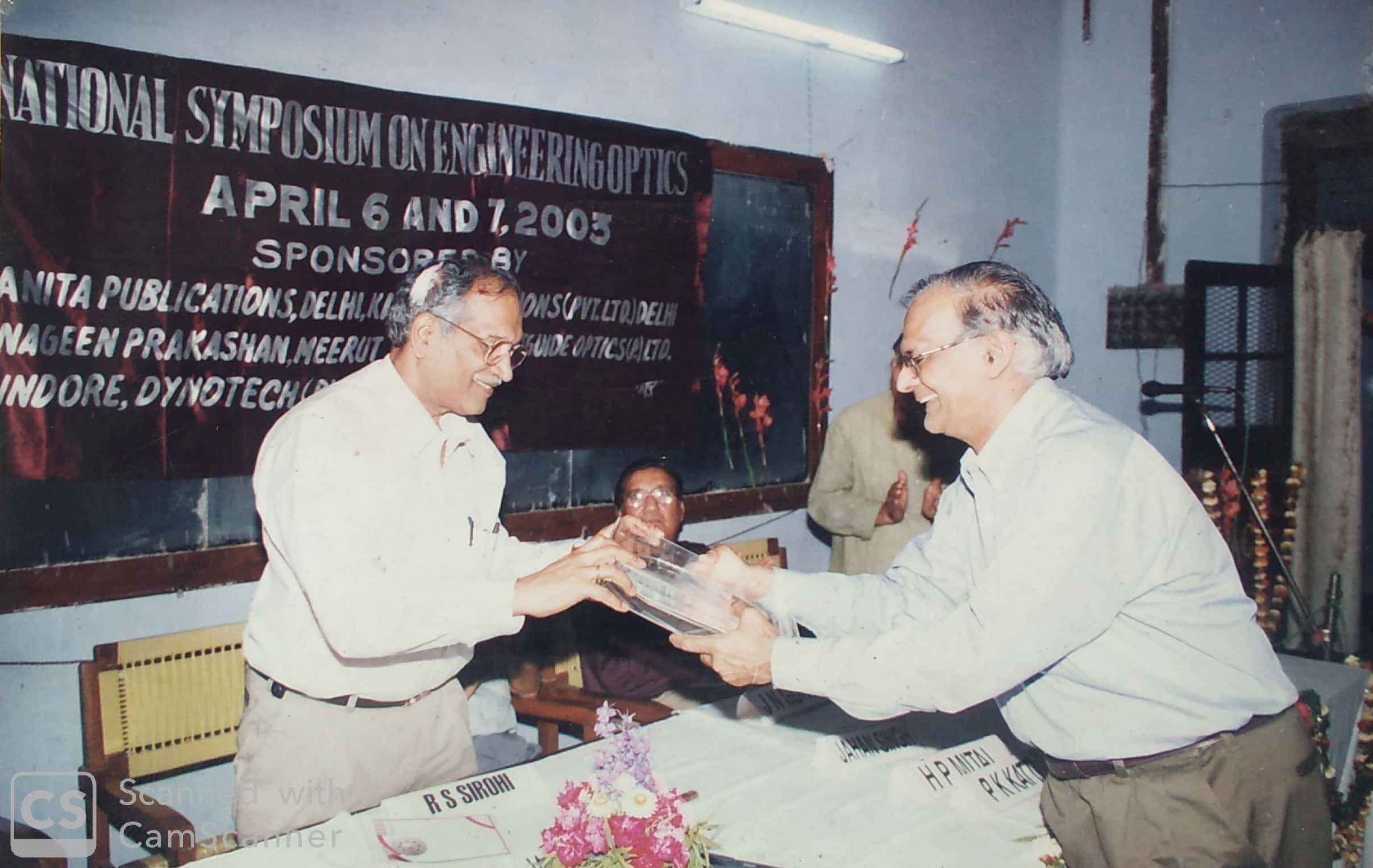
Guest Editor
Bishnu Pal
Mahindra École Centrale Hyderabad
(Formerly with IIT Delhi)
Bishnu
Pal born on Dec 3rd 1948 in Shillong India is currently
Professor of Physics and Dean of Academics at Mahindra École
Centrale Hyderabad India. He has been Former Chair of Physics
Department (2007-2011) and Computer Services Centre at IIT Delhi
(2003-2006) India, Member Board of Directors of OSA The Optical
Society (Washington, USA, 2009-2011), Fellow of OSA the Optical
Society (USA) and SPIE The International Society for Optics and
Photonics (USA), Distinguished Honorary Member of Royal Norwegian
Academy of Sciences and Letters (DKNVS, Norway), Senior Member of
IEEE (USA) and Distinguished Lecturer of IEEE Photonics Society
(2005-2006), Fellow and President of Optical Society of India
(2012-March 2015), Alexander von Humboldt Fellow (1982-83, Germany)
and Fulbright Scholar at NIST Boulder CO (1991, USA), PDF and
latter Visiting Professor of Royal Norwegian

CSIR (NTNF, Oslo, 1975-77) at Norwegian University of Science and Technology Trondheim Norway, awardee of Esther Hoffman Beller Medal of OSA The Optical Society (Centenary Year 2016, USA), Invited faculty at the ICO Winter School in Optics held at ICTP 1998, Awardee of HomiBhabha award in Applied Physics of UGC (India, 2006), Om Prakash Bhasin award in Electronics and Information Technology (India, 2013), Khosla Research Award of IIT Roorkee (India, 2014) for lifetime contributions in research, Prof Y T Thathachari award for excellence in Physical Sciences (India, 2010) of Brhamara Trust (Mysore), CEOT award of IETE (India, 2010) for his contributions to Optoelectronics Devices, Co-recipient of the Fiber Optics Person of the Year award (1997) established by Lucent Technology in India and Optics award of Optical Society of India (OSI, 2010) for lifetime achievements.
Asian Journal of Physics (ISSN 0971-3093) Vol 27, No 2, Feb 2018 will be an Special issue
on
The Current Trends in Optics and Photonics Research
Photonics is the physical science of light generation, detection, and manipulation with vast applications in all areas of everyday life. Also the field of optics and photonics offers new approaches to enrich our liyes. This special issue of Asian J Physics will focus on the latest trends in optics and photonics research. The primary aim of this issue is to provide a platform for experts and researchers from all over the world to disseminate and highlight their novel contributions in the field of optics and photonics. Both innovative techniques and literature survey are warmly welcome for submission. More specifically, research in areas such as light detection, information processing, photonic computing, telecommunications, holography, nonlinear and quantum optics are also welcome.
Topics of Interest
The suggested topics include, but not limited to:
Manuscripts must be submitted in MS Word or in INDESIGN (There is no limit of number of pages) to :
Dr Abdelbasat Mohamed on
abdelbaset.ibrahim@gmail.com
Or
Er Manoj Kumar on asian_j_p@rediffmail.com
Last Date of Submission of Manuscripts: 30th Jan 2018
Abdalbaset Mohamed
Managing
Editor (Academics)
Department
of Physics, Faculty of Applied Sciences,
University
Technology MARA, (UiTm), Shah Alam, Selangor, Malaysia.
V K Rastogi.
Editor, Asian J Phys
FF-43,
Mangal Bazar, Laxminagar, Delhi, India
Asian Journal of Physics (ISSN 0971-3093) Vol 26, Nos 3-4, April-May 2017 will be an Special issue
on
Trends in Image Processing and Machine Learning
Edited by
Sidike Paheding
Overview:
Recent developments in Image Processing and Machine Learning (IPML) have conveyed many advanced technologies that have been benefiting our daily lives. For instance, IPML have been successfully applied to communication systems, medical diagnosis, speech recognition, remote sensing and brain-machine interfaces.
With the advent of big data era, image processing as well as machine learning approaches become essential tools to effectively and efficiently analyze such large volume of complex data. Although significant progress has been achieved in both fundamental and application aspects, there are still many challenges, open questions and future research directions with very attractive perceptions.
The primary objective of this special issue is to advance development in IPML, and to address the related State-of-the-Art techniques in the form of mathematical, architectural and experimental aspects.
Topics of Interest:
The
suggested topics include, but are not limited to:
Submission Guideline:
This special issue serves as a forum for researchers, industry professionals and academics to present their recent works in image processing and machine learning. Both innovative techniques and literature survey are warmly welcome for submission. It is strict rule that all submitted manuscripts must not have been published in elsewhere and are not currently in review by other journals or conferences.
All submissions are subject to the AJP reviewing procedures. Perspective authors, who submit manuscripts to this special issue, are encouraged to volunteer as reviewers for the peer-review process.
For preparing manuscript, the authors should follow the Author Guide of AJP at http://asianjournalofphysics.in/instructions
The papers may be submitted directly on asian_j_p@rediffmail.com/pahedings@slu.edu
Important Dates:
Full manuscript due: April 15th, 2017
Author Notification: April 30th, 2017
NOTE: Asian J Phys is a Publication Not for Profit and there is NO PRINT CHARGE. Free PDF will be supplied to each author
Guest Editor
Dr. Sidike Paheding, Member of IEEE, SPIE, Tau Beta Pi
Center for Sustainability
Saint Louis University, Saint Louis, MO 63108, USA
Email:
pahedings@slu.edu
Guest Editor
Sidike Paheding received his B.S. degree in electronic information engineering from Northwest University for Nationalities, M.S. and Ph.D. degrees in electrical and computer engineering from University of South Alabama and University of Dayton, respectively. He recently joined the Center for Sustainability as a postdoctoral research associate at Saint Louis University, Saint Louis, USA. He has authored or coauthored more than 50 publications, including refereed journals and conference proceedings in the field of image processing, pattern recognition, machine learning, computer vision and remote sensing. Dr. Paheding also serves as a reviewer for a number of reputed journals and international conferences. He is a member of IEEE, SPIE and Tau Beta Pi.
Sidike Paheding

Postdoctoral Research Associate
Center for Sustainability,
Saint
Louis University,
St.
Louis, MO 63108
Asian Journal of Physics (ISSN 0971-3093) Vol 26, No 2, Feb 2017 will be an Special issue
on
Latest Advances in Interferometric and Non-interferometric 3D Imaging Techniques and Applications
Edited by
George Nehmetallah and Jonathan Petruccelli
Three-dimensional imaging is used in a plethora of domains, such as 3D nonintrusive testing of cracks and fatigue in equipment, defect inspection, precision measurements, the monitoring of automated processes, 3D particle image velocimetry, 3D stress and deformation measurement, 3D microscopy of transparent phase objects for biomedical imaging, and holographic displays for the entertainment industry, just to name a few.
This special issue will focus on the latest advances in interferometric and non-interferometric 3D imaging techniques and applications in the fields of 3D optical imaging and metrology as applied to various industries, with particular emphasis on practical applications in biomedicine, biophotonics, and scientific and optical inspection.
Scientific and technology innovations are the main motivations for submissions to this issue. We encourage authors to give full and in-depth descriptions of the concept, theory, mathematical model, experimental system, and experimental results. Some emphasis shall be placed on the implementation of new methods, algorithms and sensor components into complete measurement systems. Moreover, new approaches related to resolution enhancement and evaluation of optical measurement systems, as well as their implementation and application are in the focus of this issue.
I would like to invite original papers (Review articles ). in all areas of 3D Imaging, including but not restricted to:
Last date of submission of manuscripts: 25 January 2017
Looking forward to an outstanding special issue.
Guest Editors
George Nehmetallah, Senior member OSA, SPIE;
Assistant Professor, EECS Department
The Catholic University of America, Washington, DC 20016, USA
Phone (937) 305-3411,nehmetallah@cua.edu
Jonathan Petruccelli, Assistant Professor
Department of Physics, University at Albany, State University of New York
1400 Washington Avenue, Albany, NY 12222
Phone
(518) 442-3300, jpetruccelli@albany.edu
Asian Journal of Physics (ISSN 0971-3093) Vol 26, No 1, January 2017 will be an Special issue
on
Recent advances in trap based precision measurement and application
Edited by
Manas Mukherjee
In recent years ion trap based precision measurement has made tremendous progress in strengthening our understanding of nature. A single or multiple ions in an ion trap after being laser cooled provides the best scenario of perturbation free quantum system. Therefore, it is being applied not only to perform precise quantum state manipulation but also to apply it for probing fundamental symmetries of nature like parity and time reversal. On one hand g-factor measurements on single particle has been performed with exceedingly high precision in Penning traps aiming to compare it with anti-proton, on the other hand ion clocks in Paul traps are becoming more and more precise competing neck-to-neck with optical lattice clocks. On the emerging side ion traps are the simplest devices to test the behaviour of matter close to quantum regime in particular pertaining to thermodynamics and quantum heat engines.
Therefore, for this special issue, contributions are invited to summarize the developments made in this field over the last few years and also what could be expected in the coming years in both theory and experiment. This includes both Penning and Paul trap measurements apart from electrostatic and storage rings. The issue would highlight the success of these measurements and shed light on the future of this rapidly expanding field.
The
topic would include but not limited to
1.
Precision tests on many body physics
2.
Penning trap measurements with single protons
3. Ion
clock
4.
Quantum information processing with trapped ions
5.
Thermodynamics in quantum limit with trapped ions
Manas Mukherjee
Editor
Asian Journal of Physics (ISSN 0971-3093) Vol 25, No 9, Sept 2016 will be an Special issue
on
Advances in High Precision Spectroscopy and Tests of Fundamental Physics
Edited by
Bijaya Kumar Sahoo
The Asian Journal of Physics (AJP) invites authors to submit original or review articles on recent advances in high precision spectroscopy in atomic and molecular physics and other disciplines in relation to probing the fundamental symmetries of nature. In the past several years, there has been significant progress in our understanding of the fundamental interactions using experimental techniques both at the low-energy and high-energy scales. The long search for finding the Higgs boson was successful a year ago, but other quests are on to explain the possible reasons for the matter-antimatter asymmetry in the universe, finite masses of neutrinos etc. These issues will have to be addressed by new theories. Some of the future measurements of the permanent electric dipole moment of any particle or atomic system due to parity and time reversal symmetry violations, and of parity non-conservation effects in atomic and molecular systems using table top experiments, could provide evidence of the existence of certain new physics beyond the standard model of particle interactions. Remarkable advances in the areas of trapping and cooling of single charged ions and ultracold atoms in optical lattices could play a pivotal role in such possible experimental achievements.
From the recent progress in achieving very high precision atomic clocks, it is possible to investigate plausible temporal and spatial variations of certain fundamental constants, such as the fine structure constant and the mass ratio of the proton to the electron. These variations have been predicted by certain models beyond the standard model. Moreover, high precision atomic and molecular spectroscopy are essential tools for astrophysics in the search for exo-planets.
The Special Issue of the Asian Journal of Physics, Vol 25, No 9, 2016 will focus on the recent progress in high precision spectroscopy of atomic and molecular systems and other areas addressing problems related to fundamental physics. All scientific contributions in these areas are welcome.
Manuscripts must be submitted in MS Word or in INDESIGN (There is no limit of number of pages) to Prof B K Sahoo on bijaya@prl.res.in or bijayakumar.sahoo@gmail.com
Deadline for manuscript submission: May 31, 2016
All the submitted Manuscripts will be peer reviewed.
Bijaya Kumar Sahoo
Guest Editor
Theoretical Physics Division
Physical Research Laboratory. Ahmedabad- 380 009, India
Tel. No: 0091 79 2631 4455(O), Mob. No: 0091 9726046778
Email ID: bijaya@prl.res.in ; bijayakumar.sahoo@gmail.com
11/02/2016
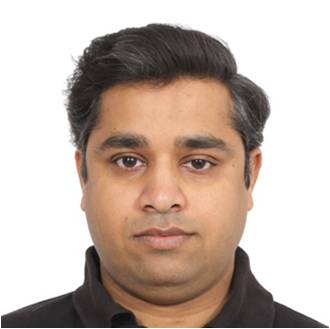
Dear Professor/ Researcher,
We are glad to inform you
that St. Peter’s Institute of
Higher Education and Research, St. Peter’s University,
Avadi, Chennai - 600 054, recognizes every year the outstanding
research work / skill / talent acquired by Scientist and
Technologist by an award called "Sir C.V. Raman Scientist
Award”. The award will be given annually to one
person only.
The Award will be bestowed on a person
who has made conspicuously important and outstanding contribution
to human knowledge and progress, fundamental or applied, in
particular field of the endeavour.
Kindly find the attachments of announcement and application form of Sir C. V. Raman award for the year 2015. I personally request you to motivate the deserving young scientists to apply for this award.
for
details click
here.
Yours Sincerely
Dr.
S. Gunasekaran, Ph.D., D.Sc.,
Dean,
Research & Development St. Peter';s Institute of Higher
Education and Research
St.
Peter';s University,Avadi,
Chennai.
Asian Journal of Physics (ISSN 0971-3093) Vol 25, No 8, 2016 will be an Special issue
on
Functional oxides: A novel class of materials for next generation device applications
Edited by
Niranjan Ramgir & Sheetal Patel
Brief Theme
With the advent in nanoscience and nanotechnology a new class of material namely functional oxides is emerging. Functional oxide (FO) refers to the metal oxides in the nanodimensions regime exhibiting novel, interesting and superior functions owing to their high surface area to volume ratios and related properties. More specifically, FO has two structural characteristics: cations with mixed valencies and anions with deficiencies or vacancies. Both these characteristics can easily be tuned by controlling the dimension of the material. As the functions of the material are closely related to its structure and morphology, a precise control over the process parameters can be looked upon as a tool to fabricate designer materials for next generation smart device applications. Advances in the nanosciences have demonstrated that FO having wealth of interesting morphologies and exhibiting interesting and novel structure-property relationship can easily be synthesized. Some of the FO’s that have shown interesting and promising properties are ZnO, SnO2, CdO, CaO, Ga2O3, TiO2, CuO, MoO3, CeO2 and In2O3. FO’s have exhibited novel and improved properties, in almost every subject or areas like semiconductivity, magnetism, optics, ferroelectrocity, piezoelectricity, superconductivity, thermoelectricity and catalysis. Accordingly, they have found applications in various fields like solar cells, thermoelectrics, photocatalysis and gas sensing.
For gas sensing applications the ability to synthesis FO with tailored made surface reactivity have resulted in sensors with enhanced sensor response characteristics. The sensors are required to fulfill the 4S selection criteria namely “Sensor response, Selectivity, Stability and Suitability”. For successful deployment, the sensor should exhibit high sensor response, high selectivity towards a particular gas, long term stability in the test environment and should be economically viable. Different FO’s like SnO2, ZnO, WO3, and In2O3 have demonstrated their potential in fulfilling the above mention selection criteria and accordingly, sensor for industrial, agriculture and biomedical applications have been realized. Example can be provided of ZnO nanowires wherein the operating temperature of maximum sensor response was systematically brought down to room temperature by a careful choice of sensitizers. The nanowires were synthesized using hydrothermal method which is also an economical viable process.
For thermoelectric applications i.e., scavenging waste heat and converting it into electricity, FO are expected to play an important role. The conversion efficiency of a thermoelectric material is evaluated according to its figure of merit, defined as Z = S2σ/κ, where S is the Seebeck coefficient, σ is the electrical conductivity, and κ is the thermal conductivity. Herein FO material offers the advantages like high thermal stability, low cost, and weak toxicity. Some complex superlattices in nanostructures contain periodic compositional and structural features, typically on the nanometer scale, making them promising materials for thermoelectric applications. In particular, the nano dimension of the material helps in the significant reduction of the thermal conductivity owing to the scattering of a wide spectrum of phonons by dislocations, nanoscale amorphous/crystalline features and grain boundaries. This eventually is expected to contribute for increasing the ZT of the material.
For photovoltaic applications, FO’s have found their utility as transparent conducting front electrodes in solar cells and as electron or hole transport layers. More recently, heterojunctions entirely based on FOs, so called all-oxide photovoltaic cells (TiO2/Cu2O, ZnO/Cu2O), are attracting considerable attention due to their promising potential for price reduction. Apart from this FO have demonstrated their utility for other energy applications like batteries, solid-oxide fuel cells and photo catalysis.
The special issue aims at providing an introduction to the novel and emerging field of functional oxides. More specifically, it will provide an overview of different synthesis approaches, characterization, properties and applications of commonly used functional oxides like ZnO, SnO2, CdO, CaO, Ga2O3, TiO2, CuO, MoO3, CeO2 and In2O3. The physics and chemistry at nanoscale highlighting the nano size effects, interface properties, structure-property relation and integrated functionalities will also be addressed. The issue will also emphasis the applied aspects of physics, chemistry and engineering of FO’s for their possible usage in applications including sensors, thermoelectrics, solar cells, photocatalysis and micro/nano electronics. In particular, the issue will cover the recent advances in the next generation device application of these materials with main emphasis on the challenges that are required to be met in order to achieve or realize the complete commercial product.
Last date of Submission of Manuscript: 30th January 2016.
Please contact the Guest Editors via e mail at: niranjanpr@yahoo.com / sheetal@ee.iitb.ac.in, dr_sheetalpatil@yahoo.com by November 15, 2015 stating that you are interested in contributing to the AJP special issue and submitting the abstract of your paper.
Manuscripts should be sent to niranjanpr@yahoo.com / sheetal@ee.iitb.ac.in, dr_sheetalpatil@yahoo.com in MS Word format following the Instructions for Authors, published at http://asianjournalofphysics.in/instructions. Submitted manuscripts should not have been published previously, nor be under consideration for publication elsewhere (except conference proceedings papers). All manuscripts are reviewed and refereed through a peer-review process.
Asian Journal of Physics (AJP), a Publication not for Profit, is serving the academic community and there is no article processing charge.
For more information, visit the official website of the journal: http://asianjournalofphysics.in or contact Editor, Vinod Rastogi on : v_krastogi@rediffmail.com / asian_j_p@rediffmail.com
Editors
Dr. Niranjan S.
Ramgir
Scientific
Officer,
Thin
Film Devices Section,
Technical
Physics Division
Bhabha
Atomic Research Centre,
Mumbai
400 085
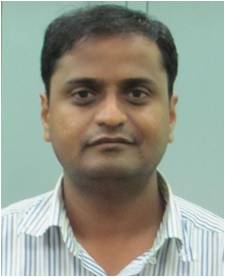
Dr. Sheetal Jayawantrao Patil
DST Women Scientist (WOS-A)
Electrical
Engg. IIT-Bombay,
Powai,
Mumbai
sheetal@ee.iitb.ac.in , dr_sheetalpatil@yahoo.com
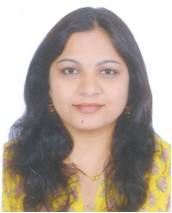
Asian Journal of Physics (ISSN 0971-3093) Vol 25, No 7, 2016 will be an Special issue
on
Micro and nano-optics
Edited by
Shanti Bhattacharya, Saulius Juodkazis and Robert Brunner
We invite papers in the broad area of micro and nano-optics and photonics. The controlled interaction of light with small structures offers the introduction of a wide variety of fascinating optical characteristics that are not possible with conventional or macroscopic-sized optical components. Therefore, due to their potential for tailored manipulation of light; micro- and nano-optics are meanwhile very frequently the essential enabler for new optical instruments. The field can be broken into a wide range of areas, including design and simulation of the optics, fabrication and associated challenges, the Physics that comes with smaller dimensions and of course, the myriad applications.
Papers are invited from the following broad areas, but not limited to: plasmonics, diffractive, refractive and hybrid micro-optics, nanostructures (e.g. nanowires, antennas, photonics crystals, bio-inspired structures, etc.), adaptive and switchable diffractive optics and nanomaterials, applications for beam shaping, imaging and spectroscopy, nano-biophotonics, bio-inspired optical systems, and fabrication techniques for micro and nanooptics.
With this issue ( Vol 25, No 7, July 2016), we would like to highlight that while the optics we use varies in size from the small to the miniscule; their impact and the possibilities they offer are infinite.
Shanti Bhattacharya
Saulius Juodkazis
Robert Brunner
About the Editors
Shanti Bhattacharya obtained her Ph D in Physics from the Indian Institute of Technology, Madras in 1997. Her Ph.D work was in the area of Optical Array Illuminators. She was awarded the Alexander von Humboldt award in 1998 and worked at the Technical University of Darmstadt, Germany. Her research work there included development of an optical pick-up for CD/DVD systems and design of diffractive optical elements for beam shaping of high power laser beams. She subsequently joined the MEMS division of Analog Devices, Cambridge, USA, where she worked on the design of an optical MEMS switch. She is presently an Associate Professor in the Department of Electrical Engineering, IIT Madras and has been there since 2005. Her current research interests are optical MEMS, diffractive optics and fibre interferometry.
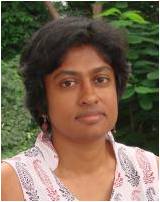
Saulius Juodkazis received his doctorate in experimental physics and material science in 1997 jointly from Vilnius University, Lithuania and Lyon-I University, France. His current research is focused on light-matter interaction in small space and time domains. Light-field enhancement and its spectral control using 3D nano-particles and nanotextured surfaces are investigated for applications in sensing, solar energy conversion, and solar hydrogen generation mechanisms. Another active direction of research in this team is creation of nanomaterials by tightly focussed ultra-short sub-1 ps laser pulses via unique high-pressure and temperature conditions for novel photonic applications. S. Juodkazis has established a nano-fabrication facility at Swinburne Univ., Melbourne, Australia, and is now developing next generation of nanofabrication techniques for 3D structuring of materials. S. Juodkazis is a Fellow of the Optical Society of America (OSA) and the International Society for Optics and Photonics (SPIE).

Robert Brunner received his PhD degree in the field of near-fieldoptical microscopy from the University of Ulm/Germany. Followinga postdoc visit at the University of Illinois, Urbana-Champaign, he worked for 12 years in the Research & Technology Center of the Carl-Zeiss company in Jena, Germany. Between 2001 and 2009 he was Lab Manager for the Microstructured Optics Group. Since 2010 he is Professor for Applied Optics at the University of Applied Sciences in Jena. His current research interests are hybrid diffractive/refractive optics, subwavelength structures, refractive micro-optics, interference lithography and bio-inspired optics.
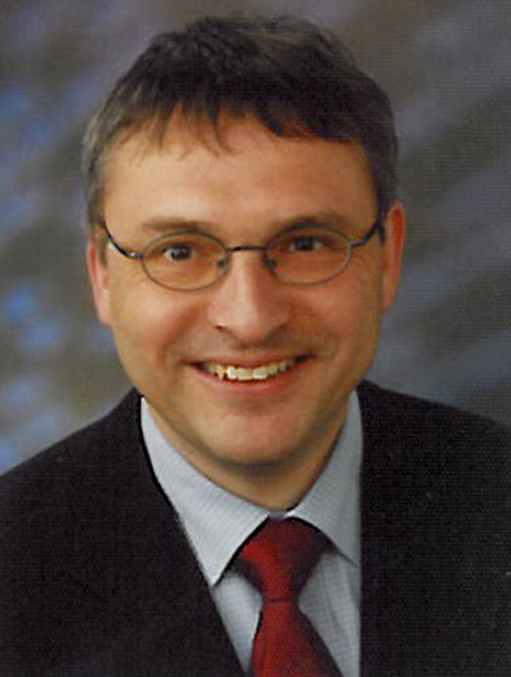
Asian Journal of Physics (ISSN 0971-3093) Vol 25, No 6, 2016 will be an Special issue
on
Organic Electronic and
Photovoltaic Materials
Edited by : Vibha Saxena and S P Koiry
The Editors are pleased to announce a special issue of Asian Journal of Physics (ISSN: 0971-3093) Vol 25, No 6, June 2016, devoted to organic electronic and photovoltaic materials. We invite submission of original research articles and reviews to this special issue that include but are not limited to
1. Conducting polymer and composite synthesis for applications in solar cells, field effect transistors, sensors
2. Theoretical and experimental studies pertaining to device improvement solar cells, field effect transistors, sensors
3. Recent advances in the field of devices-solar cells, field effect transistors, sensors-based on conducting polymers
Deadline for manuscript submissions: January 26, 2015
Special Issue Information
Conducting polymer have come a long way since its discovery in 1977 by Alan Heeger, Alan MacDiarmid, and Hideki Shirakawa, who demonstrated that alternating single and double bonds in these materials give rise to delocalized electronic states and therefore, conductivity. Numerous applications were the result of unique combination of the electronic, electrical and mechanical properties of these kind of materials. In 2000, the Nobel Prize in chemistry was awarded to its inventors for the “discovery and development of conductive polymers”. Most commonly found applications of these materials have been in solar cells, field effect transistors, light emitting diode,sensors etc. We have already witnessed happenings around us for example, 5 mm thinnest OLED TV and flat panel of OLED light.
At this juncture, when lots of new exciting organic based devices are ready or on development stage and are poised to change our life as never before, the Asian Journal of Physics will be celebrating Silver Jubilee in year 2016. Therefore, we are commemorating this auspicious occasion by a special silver jubilee Issue Vol 25, No 6, July 2016 devoteded to all aspects of theoretical and experimental understanding of various organic electronics and photovoltaic which include but not limited to solar cells, field effect transistors, sensors and other related applications based on conducting polymers/ molecules. We invite contributions in the form of original articles and as well reviews for the proposed silver jubilee issue.
Topics to be included (but are not limited to):
1. Review Articles/State of the Art Articles, concerning the current issues in the development of conducting polymer based electronic devices especially Solar Cells, Organic field effect transistors, Sensors;
2. Original research articles on theoretical and experimental studies on bulk hetero junction solar cells, field effect transistors, sensors using conducting polymers as well as their composites.
3. Original articles on synthesis and characterization of conducting polymers and their composites for possible use in solar cells, field effect transistors, sensors.
This proposed Special Issue will be edited by Dr Vibha Saxena and Dr S P Koiry, Technical Physics Division, Bhabha Atomic Research Center, Mumbai, India
Please contact the Guest Editors via e mail at: vibhas@barc.gov.in / spkoiry@barc.gov.in by October 15, 2015 stating that you are interested in contributing to the AJP special issue and submitting the abstract of your paper.
Manuscripts should be sent to vibhas@barc.gov.in / spkoiry@barc.gov.in in MS Word format following the Instructions for Authors, published at http://asianjournalofphysics.in/instructions. Submitted manuscripts should not have been published previously, nor be under consideration for publication elsewhere (except conference proceedings papers). All manuscripts are reviewed and refereed through a peer-review process.
Asian Journal of Physics (AJP), a Publication not for Profit, is serving the academic community and there is no article processing charge.
For more information, visit the official website of the journal: http://asianjournalofphysics.in or contact Editor, Vinod Rastogi on : v_krastogi@rediffmail.com/asian_j_p@rediffmail.com
With thanks,
Dr. Vibha Saxena and Dr. S.P. Koiry
Guest Editor, Asian Journal of Physics Special Issue
Contact:
vibhas@barc.gov.in / spkoiry@barc.gov.in
Editors
|
Dr. Vibha Saxena |
|
Scientific Officer Technical Physics Division Bhabha Atomic Research Center, Mumbai 400085, India
E-Mail:vibhas@barc.gov.in
MSc. (Physics), M.Tech. (Materials
Technology), Ph.D.
(Physics) |
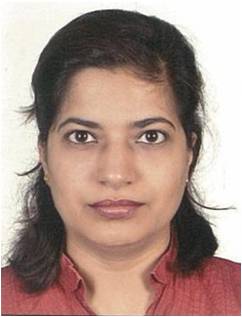
|
Dr S P Koiry Scientific Officer Technical Physics Division Bhabha Atomic Research Center, Mumbai 400085, India E-Mail:spkoiry@barc.gov.in |
| MSc. (Chemistry), Ph.D. (Physics) |
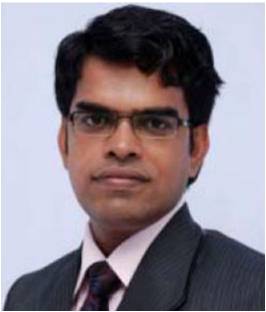
Asian Journal of Physics (ISSN 0971-3093) Vol 25, No 5, 2016 will be an Special issue
on
Digital
Holography
Edited by : Partha P.
Banerjee
Since Gabor’s discovery of the hologram approximately 75 years ago and subsequent pioneering work by Leith,Upatneiks, and Denisyuk 25 years later following the invention of the laser, holography has developed tremendously both as a means of 3D display as well as for various metrological and image processing applications. Recording of holograms has benefited immensely from the discovery of the digital camera and 3D reconstruction has been greatly simplified through the use of numerical techniques which simulate optical propagation through the hologram. At the same time computer generated holograms have gained prominence as a way to simulate holograms which can be reconstructed optically to display 3D images. Furthermore, the discovery of photorefractive materials and other novel holographic storage media has opened the door to dynamic holography and holographic interferometry.
To celebrate 25 years of the Asian Journal of Physics, I am happy and humbled to be given the opportunity to dedicate a special issue to the topic of digital holography and its applications. There have been many excellent books written on this topic, and many invited and contributed papers in the literature, as well as a dedicated topical meeting in the area that has been hugely successful over the last 10 years.
I would like to invite papers in all areas of digital holography, including but not restricted to:
Basic principles, numerical methods, phase unwrapping, compressive sensing, etc.
Holographic interferometry
Holographic microscopy
Transport of intensity
Coherence holography
Nonlinear holography
Holographic tomography
Computer generated holography
Novel holographic materials
Last date of submission of manuscripts 31 December 2015
Looking forward to an outstanding special issue.
With best wishes
Partha P. Banerjee, Fellow OSA, SPIE; FInstP
Professor and Director, Electro-Optics, and Professor, ECE
University of Dayton, Dayton, Ohio 45458, USA
About the Editor
P.P. Banerjee
Director, Electro-Optics Program
Professor, Electro-Optics Program and
Department of Electrical & Computer Engineering
University of Dayton, Dayton OH 45469
ph: (937) 229 3561; fax: (937) 229 4529
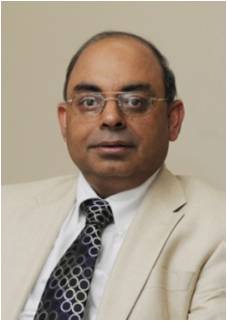
Dr. Partha Banerjee is Professor of Electrical and Computer Engineering (ECE) and Electro-Optics (EO) at the University of Dayton (UD) since 2000, where he is currently Director of Electro-Optics. He served as Chair of ECE at UD from 2000-2005. Prior to UD, he was with the University of Alabama in Huntsville from 1991-2000, and with Syracuse University from 1984-1991. His research interests include acousto-optics, photorefractives, nonlinear optics, holography, and metamaterials. He is Fellow of OSA, SPIE and the Institute of Physics (FInstP), and is senior member of IEEE. He received the NSF Young Investigator Award in 1987.
At UD, Dr. Banerjee has established the Holography and Metamaterials (HaM) lab where he leads a research group comprising a Research Professor, a post-doctoral fellow, 3 PhD students and 2 MS students. He has organized the Optical Society of America (OSA) international meeting on Digital Holography in 2010, and is Topical Editor for Applied Optics. His work on digital holography with DMS Tech., Huntsville has been funded by the Air Force and Army, and was one of the 11 out of over 500 that received the Army SBIR Achievement award in 2011. He also extensively collaborates with the Laser and Optical Communication Institute (LOCI), which works on LADAR or laser radars. Furthermore, the first negative index metamaterial (NIM) working in blue light using binary co-sputtered nanoparticles, funded by DARPA, has been designed, developed and tested at his HaM lab, in collaboration with Physics, UD Research Institute, and DMS Tech. Dr. Banerjee also works closely with the Materials Directorate at the Air Force Research Labs, WPAFB in the area of inorganic and organic photorefractive materials.
Over the last 10 years, he has been awarded grants and contracts over $2.5M. To date, Dr. Banerjee has published 5 textbooks, over 120 refereed journal papers, and over 150 conference papers/ presentations, and holds 1 patent. He has supervised over 20 PhD dissertations and 10 MS theses.
Asian Journal of Physics (ISSN 0971-3093) Vol 25, No 4, 2016 is an Special issue
in
honour and recognition of
Prof F T S
Yu
Edited by Chau-Jern Cheng
Chau-Jern Cheng received his PhD degree in Electro-Optical engineering from the National Chiao Tung University, Taiwan, in 1994. Dr. Cheng joined the Department of Electronic Engineering, St. John’s & St. Mary’s Institute of Technology, Taiwan, as an associate professor in 1994 and served as Chairman of the Department from 1996 to 1999. In 2001, Dr. Cheng was invited to join the Department of Electrical Engineering, Feng Chia University, Taiwan. From 2002, Dr. Cheng had been an Associate Professor in the Department of Electro-Optical Engineering, National Taipei University of Technology. Since 2005, Dr. Cheng had been a full Professor in that Department. In 2007, Prof. Cheng was invited to be the faculty memberof the Institute of Electro-Optical Science and Technology, National Taiwan Normal University and served as the Institute’s Director from 2011 to 2014. Prof. Cheng was selected as the Supervisor at Large of Taiwan Photonics Society (TPS) and is currently a member of SPIE and OSA. Prof. Cheng has chaired several
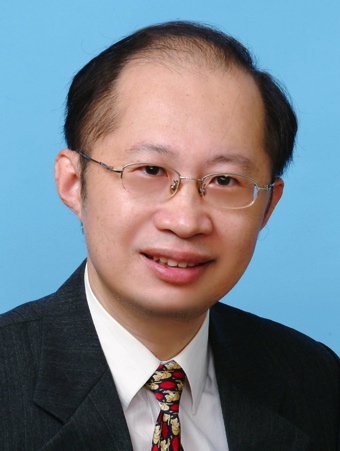
international conferences and symposiums and served as Feature Issue Editors of Applied Optics of OSA, Optical Engineering of Taiwan Photonics Society (TPS), and Taiwan Information storage Association (TISA). Prof. Cheng has published over 90 referred papers of scientific and technical research in proceedings of international conferences and Refereed journals. His research interests include information optics, optical metrology, digital holography, computer-generated holography, 3-D imaging and display.
Asian Journal of Physics (ISSN 0971-3093) Vol 25, No 3, 2016 will be an Special issue
on
Solar Astronomy in 21st Century
Guest Edited by
Kiran Jain and Sushant
Tripathy
Asian Journal of Physics invites contributions in the form of review articles and research papers in solar astronomy covering all aspects of observations (both from ground and space), data reduction techniques and tools, and science results. Last two decades have seen significant progress in Solar Physics research, mainly supported by advanced observational techniques, analysis methods and modeling efforts. Uninterrupted and simultaneous observations at high spatial- and temporal-resolutions at several wavelengths have added new dimensions to the studies of variable nature of the Sun and the changes occurring from solar interior to the outer solar atmosphere. The Special Issue will focus on recent developments in observations and their reduction methods, various aspects of solar activity including statistical studies and individual events, interpretations, models and simulations.
Manuscript should be sent to solarphysics21century@gmail.com . Last date of submission is November 30, 2105. All submitted manuscript will be gone through the peer-review process. The general format for submission of papers in MS Word can be found on the journal web site at http://asianjournalofphysics.in/instructions. If you prefer to use latex/tex, please contact Guest Editors for further information.
There is no limit on the number of pages and the page charges are also are waived off, however, authors of the review papers are encouraged to contact Guest Editors in advance by submitting an abstract of the paper not later than September 30, 2015. Guest Editors will notify authors if the topic is appropriate for special issue.
Drs. Kiran Jain and Sushant Tripathy are the Guest Editors for this special issue. Please contact them at solarphysics21century@gmail.com for any query related to this issue.
Asian Journal of Physics is a Publication non for Profit serving the academic and research community. For more information, visit the official website of the journal: http://asianjournalofphysics.in .
Editors
Kiran Jain, is currently the Program
Scientist of Solar Interior Group at National Solar Observatory's
Synoptic Program (USA). Dr. Jain received Ph.D. in Theoretical
Nuclear Physics from University of Roorkee (now Indian Institute of
Technology, Roorkee) in 1987. After her Ph.D., she worked as
Post-doctoral Positions at Florida State University,(Tallahassee,
USA), Physical Research Laboratory (Ahmedabad, India) and
University of Surrey (Guildford,UK). Her major contributions in
Nuclear Physics include intrinsic states and residual interactions
in deformed nuclei that have received numerous citations. In late
nineties, her research interest shifted from nuclear structure to
solar physics, in particular the solar interior which is only
accessed by studying the oscillations below solar surface. Before
moving to National Solar Observatory in 2005, she held positions at
Udaipur Solar Observatory (Udaipur) and
Indian Institute of Astrophysics
(Bangalore). Her current research interests include Helioseismology
and solar activity, sub-surface weather,
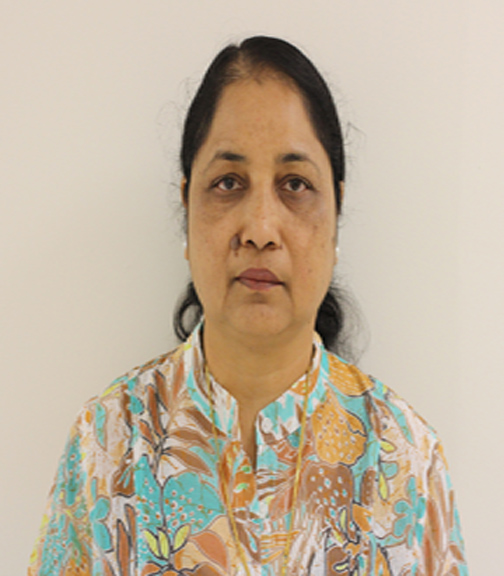
irradiance modeling, space weather and Sun-Earth connection. Dr. Jain has around 120 publications to her credit, and also edited a book on. Fifty Years of Seismology of the Sun and Stars. She is the joint recipient of NASA's Group Achievement Award to SDO Science Investigation Teams in 2012. She is the member of several national and international professional societies.
Sushanta C Tripathy currently works as a scientist at National Solar Observatory, Tucson, USA. Dr. Tripathy received his Ph.D. in Physics from Physical Research Laboratory, Ahamedabad in 1993. In 1995, he joined Udaipur Solar Observatory as a scientist where he worked in the field of Helioseismology. In 2004, Dr. Tripathy moved to National Solar Observatory. His research interest includes the study of interior of the Sun and stars, solar activity, solar flares, coronal mass ejections and numerical simulations. Dr. Tripathy has edited two books and has more than 100 publications to his credit. He is the joint recipient of NASA's Group Achievement Award to SDO Science Investigation Team in 2012. He is also a member of several national and International professional societies including a member of International Astronomial Union (IAU).
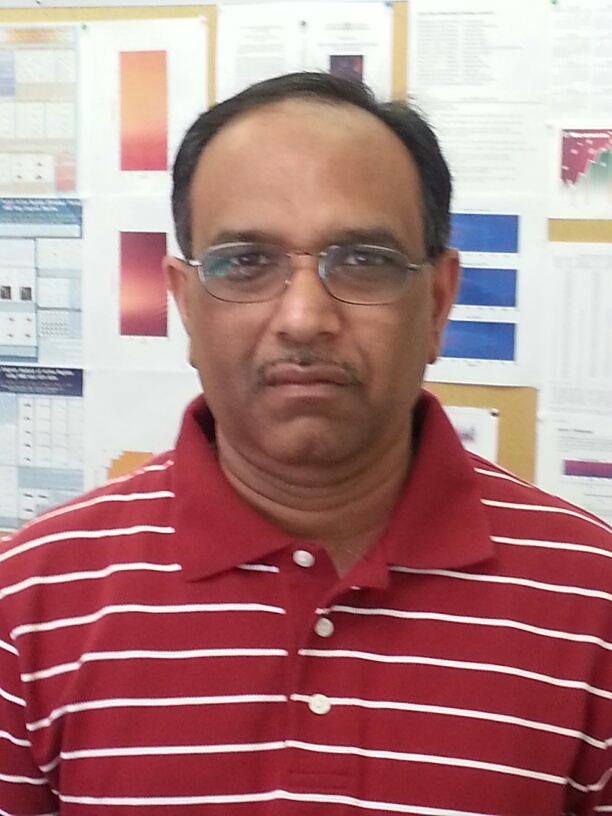
The opening
issue of 25th Anniversary of Asian Journal of Physics
(ISSN 0971-3093) will be an
special
issue
on
Optical Signal Processing: Imaging, Information Security and Holography
Vol 25, No 1, 2016
There will be an award for Rs 10,000 (Approximately US$ 200.00) for best paper of the opening issue
Editors
WILLIAM T. RHODES, PH.D., is Professor Emeritus of Georgia Institute of Technology and Professor of Computer & Electrical Engineering and Computer Science at Florida Atlantic University. In 1976 he was a Humboldt Research Fellow at the University of Erlangen-Nürnberg in Germany. His research interests include optical image formation, diffraction theory, and secure communication. He is coauthor of the textbook Introduction to Lasers and Their Applications and is currently working to complete a text on the Principles of Fourier Optics. He is Editor-in-Chief for the Springer-Verlag Optical Sciences series of monographs and Editor for the Springer Graduate Texts in Physics series. Between 1987 and 1993 he served as Editor/Editor-in-Chief of Applied Optics and between 2010 and 2011 as the Founding editor of SPIE Reviews. He is a Fellow of the OSA and the SPIE, and has served on the boards of both societies.
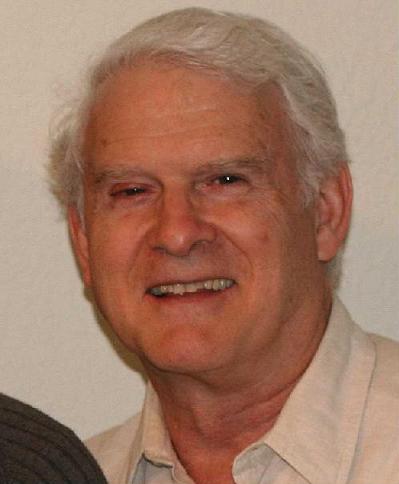
John T. Sheridan received his Bachelors degree (H1) in Electronic Engineering, from University College Galway (NUIG) in 1985 and his Masters degree in the Science of Electrical Engineering, from Georgia Tech, in 1986. While at GT he worked as a Research Assistant of Prof. William T. Rhodes. In 1987 he matriculated as a member of Jesus College Oxford and in 1991 he was awarded his doctorate by Oxford University for work carried out under the supervision of Prof. Laszlo Solymar and Prof. Colin J. R. Sheppard. This was followed by postdoctoral fellowships, supported first (1991) by the Alexander von Humboldt Foundation and later (1992) by a European Community Bursary. Both were held at the Lehrstuhl fur Angewandte Optik in Erlangen-Nürnberg University, under the leadership of Prof. Dr A. W. Lohmann. In 1994 he took up a position as a visiting scientist at the European Commission Joint Research Centre, in Italy. In 1997 he was appointed to the School of Physics, Dublin Institute of Technology as a permanent lecturer.
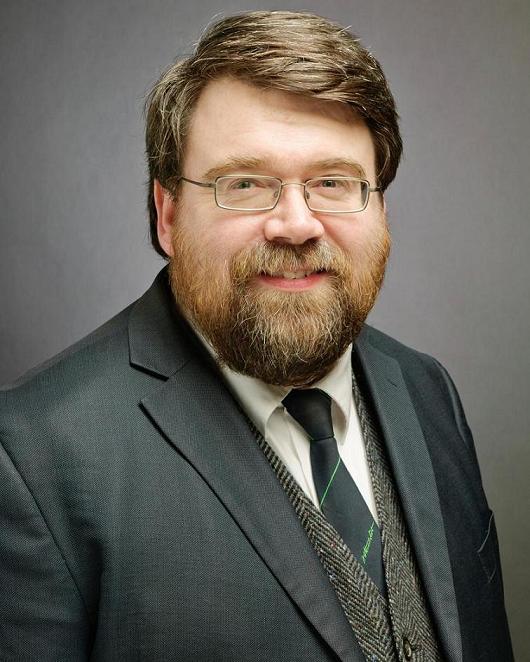
He joined the Dept. of Electronic and Electrical, Engineering, UCD, in 2000 as a College Lecturer. In 2005 he became a Senior Lecturer and in 2007 an Associate Professor (Professor of Optical Engineering) within the School of Electrical, Electronic and Communications Engineering. In 2014 he was elected a Fellow of the international Optical Engineering Society, SPIE and currently co-chairs two regular SPIE conferences (held in Brussels and Prague). He is the co-editor of an upcoming book (2015) on the Linear Canonical Transform published by Springer Verlag. Professor Sheridan’s research is primarily in the area of applied optics and optoelectronics. He serves as chair and on the committees of several international conferences in Europe and is a member of the editorial boards of several international journals. His publications include: 4 international patents, 4 book chapters,~ 20 technical reports, ~180 conference proceedings papers, and ~190 reviewed journal papers. His papers have been cited more than 3500. He is the co-founder and director of the UCD spin-out company Equilume Ltd, was a runner up in the NOVA UCD commercialisation awards in 2012 and which went on to win the Enterprise Ireland “one to watch” award in 2012. In 2014 it was shortlisted for an Irish Times Innovation Award. The bio-optical product is used to enhance horse breeding. Units are currently in use in Australia, Ireland, Japan New Zealand and the USA. Prof Sheridan has been actively engaged in collaborative projects with national and international industrial partners his entire professional career. www.equilume.com
Damien
P. Kelly is a junior professor (Carl-Zeiss Stiftung) with
the Institute for Technical Optics in the Technical University of
Ilmenau in Germany. He earned a PhD in engineering from the School
of Electrical, Electronic and Mechanical Engineering, University
College, Dublin, Ireland, in 2006 and his BS in electronic
engineering at the National University of Ireland, Cork, in 2000.
He completed a two-year post-doc with National University of
Ireland, Maynooth where he worked on 3-D display and capture
systems, specializing in digital holography, sampling theory, and
speckle statistics. Prior to this he worked as a postdoctoral
researcher with Technical University in Vienna on experimental THz
spectroscopy systems. His research interests include classical
optical problems in diffraction and propagation, statistical optics
with an emphasis on speckle fields, modeling and characterization
of paraxial optical systems, speckle metrology systems, digital
optics including digital holography and phase retrieval techniques,
coherent and
incoherent
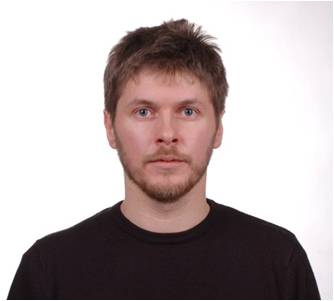
imaging systems, signal processing, including Fourier transform, fractional Fourier transform, Linear Canonical transform, Wigner distribution function, sampling and signal representation, propagation of light in turbid media such as biological tissue as well as modeling and simulation of broad-band optical sources. He has a H-index of 15 and has published over 90 scientific articles including 30 journal papers. He is a member of both SPIE and OSA, an active reviewer for several optics journals and currently an editor with the journal Optik. Hobbies include music, history, and economics.
Guohai Situ is a senior researcher with the Shanghai Institute of Optics and Fine Mechanics, Chinese Academy of Sciences, holding a “1000 plan professorship for young experts”. Before he joined this institute in late 2012, he spent about 6 years working in University College Dublin in Ireland, Universität Stuttgart in Germany, and Princeton University in the United States, after he obtained his Ph. D degree from the Chinese Academy of Sciences in 2006. Dr.Situ's research interests span a wide field of "phase engineering", ranging from developing novel techniques and algorithms for "passive" phase reconstruction, to "actively" engineering the phase for (computational) optical imaging and optical signal processing. He has published 27 papers in leading journals including Nature Photonics. His papers have been cited over 1300 times according to Google Scholar. Dr. Situ is a reviewer for major optics journals and a topical editor of the OSA’s journal of Applied Optics.
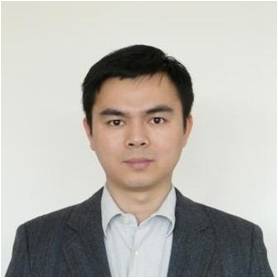
2nd
issue of 25th Anniversary of Asian Journal of
Physics (ISSN
0971-3093) will be dedicated
to
Prof
Wolfgang Kiefer
Institute for Physical and Theoretical Chemistry, University of Würzburg, Germany
on the occation of his 75th
Birthday
Edited by
Jürgen Popp
There will be an award for Rs 10,000 (Approximately US$
200.00) for best paper of the
issue
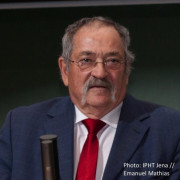
Jürgen Popp studied chemistry at the universities of Erlangen and Wuerzburg. After his PhD in Chemistry, he joined Yale University for postdoctoral work. He subsequently returned to Wuerzburg University where he finished his habilitation in 2002. Since 2002, he holds a chair for Physical Chemistry at the Friedrich-Schiller University Jena. Furthermore, he is the Scientific Director of the Leibniz Institute of Photonic Technology, Jena, since 2006. His research interests are mainly concerned with biophotonics. In particular, the development and application of innovative Raman techniques for biomedical diagnostics as well as environmental and food analysis is at the heart of his interests. He has published more than 450 journal papers and is fellow of SAS and SPIE. 2012 he received a honorary doctor’s degree at Babes-Bolyai University Cluj-Napoca, Romania and in 2013 the Robert-Kellner Lecture Award.
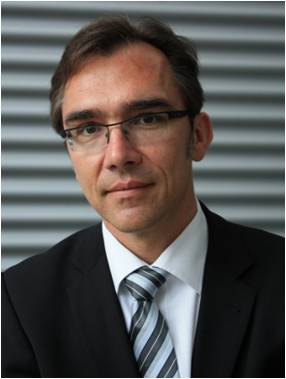
Asian Journal of Physics (ISSN 0971-3093) Vol 24, No 12, 2015 will be an Special issue
in
honour and recognition of
Prof Joseph Shamir
Guest Edited by
Prof F T S Yu and Prof Shaya Fainman
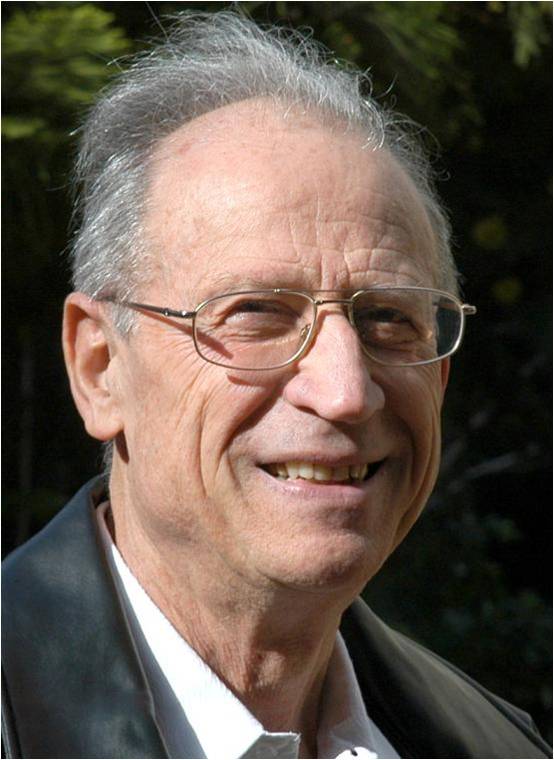
Asian Journal of
Physics (ISSN 0971-3093) Vol 24, No 10, 2015 will be an
Special issue
on
Optical Metrology and Sensing Techniques
Guest Edited
by
M P Kothiyal, Chandra Shakher and Nandigana Krishna Mohan
Dedicated
to
Prof R S
Sirohi
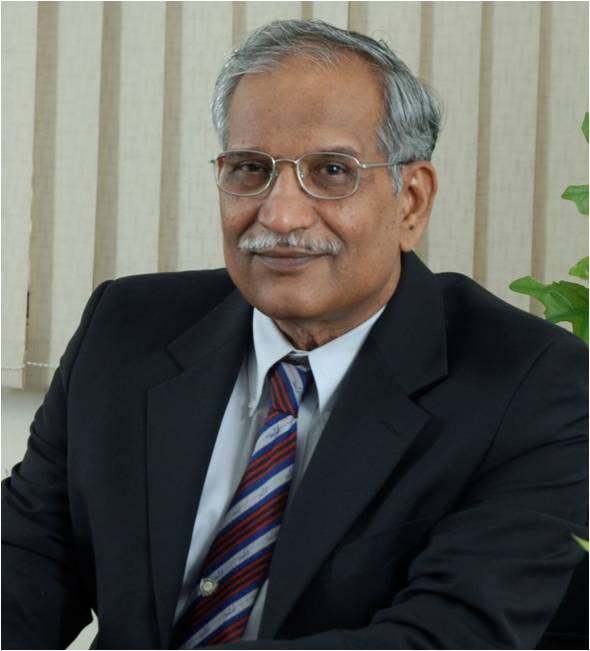
The issue would publish new results as well as state of the art reviews in the areas of: Interferometry, holography and speckles, adaptive optics, fibre optics sensing, plasmonic sensing , photo acoustic sensing and related topics.
Rajpal. S. Sirohi, Ph. D. is currently the Chair Professor, Physics Department, Tezpur University, Tezpur (Assam). During 2000-2009, he had been deeply engaged in academic administration and research as Director IIT Delhi (Dec. 2000- April 2005), Vice-Chancellor Barkatullah University, Bhopal (April 2005-Sept. 2007), Vice-Chancellor of Shobhit University, Meerut (Oct. 2007-March 2008) and Vice-Chancellor of Amity University Rajasthan, Jaipur (March 2008-Oct.2009). He also served at the Indian Institute of Science, Bangalore and in various capacities at the Indian Institute of Technology Madras, Chennai, India.
Prof.
Sirohi worked in Germany as a Humboldt Fellow and an Awardee. He
was a Senior Research Associate at Case Western Reserve University,
Cleveland, Ohio, and Associate Professor, and Distinguished Scholar
at Rose Hulman Institute of Technology, Terre Haute, Indiana. He
was ICTP (International Center for Theoretical Physics, Trieste
Italy) Consultant to Institute for Advanced Studies, University of
Malaya, Malaysia and ICTP Visiting Scientist to the University of
Namibia. He was Visiting Professor at the National University of
Singapore and EPFL, Lausanne, Switzerland.
Prof. Sirohi is Fellow of several important academies/ societies in India and abroad including the Indian National Academy of Engineering; National Academy of Sciences, Optical Society of America; Optical Society of India; SPIE (The International Society for Optical Engineering), Instrument Society of India and honorary fellow of ISTE and Metrology Society of India. He is member of several other scientific societies, and founding member of India Laser Association. Prof. Sirohi was also the Chair for SPIE-INDIA Chapter, which he established with co-operation from SPIE in 1995 at IIT Madras. He was invited as JSPS (Japan Society for the Promotion of Science) Fellow and JITA Fellow to Japan. He was a member of the Education Committee of SPIE.
Prof. Sirohi has received the following awards from various organizations:
Humboldt Research Award (1995) by the Alexander von Humboldt Foundation, Germany; Galileo Galilei Award of International Commission for Optics (1995); Amita De Memorial Award of the Optical Society of India (1998); 13th Khwarizmi International Award, IROST (Iranian Research Organisation for Science and Technology (2000); Albert Einstein Silver Medal, UNESCO (2000); Dr. YT Thathachari Prestigious Award for Science by Thathachari Foundation, Mysore (2001); Pt. Jawaharlal Nehru Award in Engineering & Technology for 2000, (awarded in 2002) by MP Council of Science and Technology; NRDC Technology Invention Award on May 11, 2003; Sir CV Raman Award: Physical Sciences for 2002 by UGC (University Grants Commission); Padma Shri, a national Civilian Award (2004); Sir CV Raman Birth Centenary Award (2005) by Indian Science Congress Association, Kolkata; Holo-Knight (2005), inducted into Order of Holo-Knights during the International Conference-Fringe 05-held at Stuttgart, Germany; Centenarian Seva Ratna Award (2004) by The Centenarian Trust, Chennai; Instrument Society of India Award (2007); Gabor Award (2009) by SPIE (The International Society for Optical Engineering) USA; UGC National Hari OM Ashram Trust Award - Homi J. Bhabha Award for Applied Sciences (2005) by UGC; Distinguished Alumni Award (2013) by Indian Institute of Technology Delhi; Vikram Award 2014 by SPIE (The International Society for Optical Engineering) USA.
Prof. Sirohi was the President of the Optical Society of India during 1994-1996. He was also the President of Instrument Society of India for three terms (2003-06, 2008-12). He was on the International Advisory Board of the Journal of Modern Optics, UK and on the editorial Boards of the Journal of Optics (India), Optik, Indian Journal of Pure and Applied Physics. He was Guest Editor to the Journals "Optics and Lasers in Engineering" and "Optical Engineering". He was Associate Editor of the International Journal “Optical Engineering”, USA during (1999-Aug.2013), and currently is its Senior Editor.
Prof. Sirohi has 456 papers to his credit with 244 published in national and international journals, 67 papers in Proceedings of the conferences and 145 presented in conferences.He has authored/co-authored/edited thirteen books including five milestones for SPIE. He was Principal Coordinator for 26 projects sponsored by Government Funding Agencies and Industries, has supervised 25 Ph.D. theses, 7 M.S. theses and numerous B.Tech., M.Sc. and M.Tech. theses.
Prof. Sirohi's research areas are Optical Metrology, Optical Instrumentation, Laser Instrumentation, Holography and Speckle Phenomenon.
Call for Paper
Editors
M P Kothiyal till recently was a professor in the department of physics at IIT Madras. He received his M Tech degree in Applied Optics from IIT Delhi in 1968 and PhD degree from IIT Madras in 1977. In the period from 1970 to 2014 he held various faculty positions at IIT Madras. His research interests include Optical Instrumentation and Testing, Optical Metrology, Interferometry, and Holography and Speckle techniques. During his research career M P Kothiyal has published over 115 papers in peer reviewed journals and over 100 papers in conference proceedings. He has also coauthored a book. As a DAAD Fellow he carried out research in Germany for about 3 years on different occasions at Institute of Optics, Stuttgart University. He was also a Research Associate at the Centre for Optics and Photonics, Laval University, Canada for two years.M P Kothiyal is a fellow of SPIE-The international society for optical engineering and the Optical Society of America(OSA). He is a joint recipient of NRDC meritorious invention award (2003), and is on the editorial board of Journal of Optics.
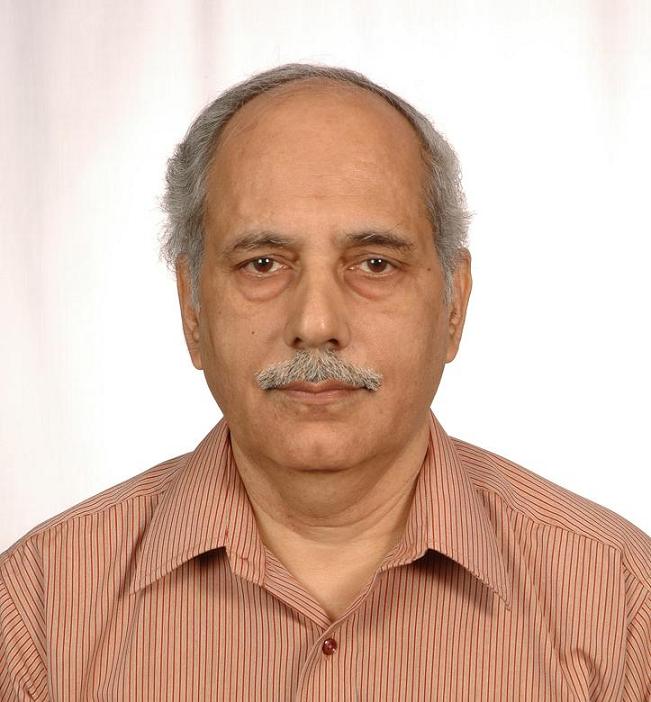
Chandra
Shakher received Master of Technology in Applied Optics
from the Indian Institute of Technology Delhi in 1976 and Ph.D.
from the Indian Institute of Technology Madras in 1980. He worked
as Scientist at Central Scientific Instruments Organization,
Chandigarh from Nov.1979 to May 1983. In May 1983 he joined Bharat
Heavy Electricals Limited, Hyderabad, an industry dedicated
for the manufacturing of power generating equipments, as Deputy
Manager. In March1989, he joined Instrument Design Development
Centre (IDDC) of the Indian Institute of Technology, Delhi (IIT
Delhi) as Chief Design Engineer and subsequently in 1995 he was
elevated to the position of Professor. For two academic sessions
(2002-2004) he was on lien from IIT Delhi and joined as the
Director of National Institute of Technology Hamirpur (Himanchal
Pradesh), India. Currently he is professor at IDDC, IIT Delhi. He
has handled a large number of research projects and industrial
consultancies. He has been an invited fellow of AIST, Japan and
JSPS,
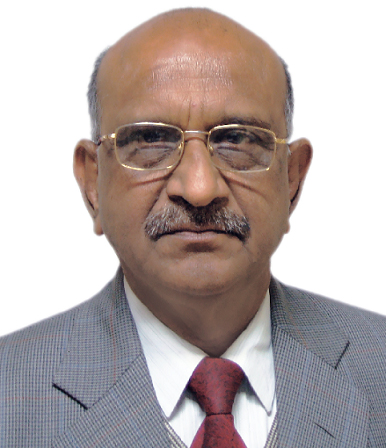
Japan. His research interests include scientific and industrial applications of holographic interferometry, laser speckles, digital holography, fiber optic sensors, optical coherence tomography and laser based instrumentation. He has published 88 research papers in international reviewed journals and 49 papers in the proceedings of international conferences. He holds four patents. He is a fellow of the Indian National Academy of Engineering and SPIE. He received Institute Outstanding Faculty Award for 1994-1995, for significant research and development work in holographic techniques and laser based systems and NRDC Independence Day Award 1993 for development of laser based alignment system for electrical power machinery. In 2014, he received Galileo Galilei Award from International Commission of Optics, for outstanding contribution to the field of holographic and speckle metrology.
Nandigana
Krishna Mohan received his M.Sc(Tech) degree in applied
physics from Andhra University, Waltair, and his MS (Engg) and Ph.D
degree in mechanical engineering from Indian Institute of
Technology, Madras. Recently he retired as Senior Scientific
Officer Gr.1 at IIT Madras. He also worked as a visiting scientist
at Universität Oldenburg, Oldenburg, Germany in 1991 under INSA-DFG
fellowship program, visiting scientist at Luleå University of
Technology, Luleå, Sweden in 1993, 1995 and 1999, as associate
research officer at National Research Council, Ottawa, Canada in
1997 and Research Associate at Philip Morris USA Richmond VA, USA
in 2002. His research areas include holographic/speckle and speckle
shear interferometry, TV holography and shearography, digital
speckle photography, holographic optical elements, stereovision
systems and optical metrology using photo-refractive materials. He
is also program committee member for various conferences and also
executive committee member of Optical Society of India. He had
published and presented around 175 papers and wrote three book
chapters in these research areas.
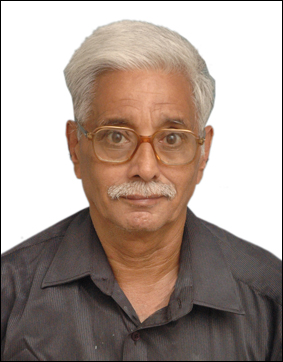
He is listed in Marquis Who's who in the World, Who’s who in America, Who’s who in Asia and Who’s in Science and Technology. He served as a Chair of SPIE India chapter from 2004-2006 and faculty adviser for IIT Madras SPIE student chapter. He is a Fellow member of Optical Society of India (OSI) and SPIE.
Asian Journal of Physics (ISSN 0971-3093) Vol 24, No 9, 2015 is an special issue
on the occasion of international year of
light
Guest Edited by:
Victor V.
Kotlyar
Editor
Victor V. Kotlyar is a head of Laboratory at the Image Processing Systems Institute (Samara) of the Russian Academy of Sciences and professor of Computer Science Department at Samara State Aerospace University. He received his MS, PhD and DrSc degrees in physics and mathematics from Samara State University (1979), Saratov State University (1988) and Moscow Central Design Institute of Unique Instrumentation, the Russian Academy of Sciences (1992). He is co-author of 350 scientific papers, 10 books and 13 inventions. His current interests are diffractive optics and nanophotonics.
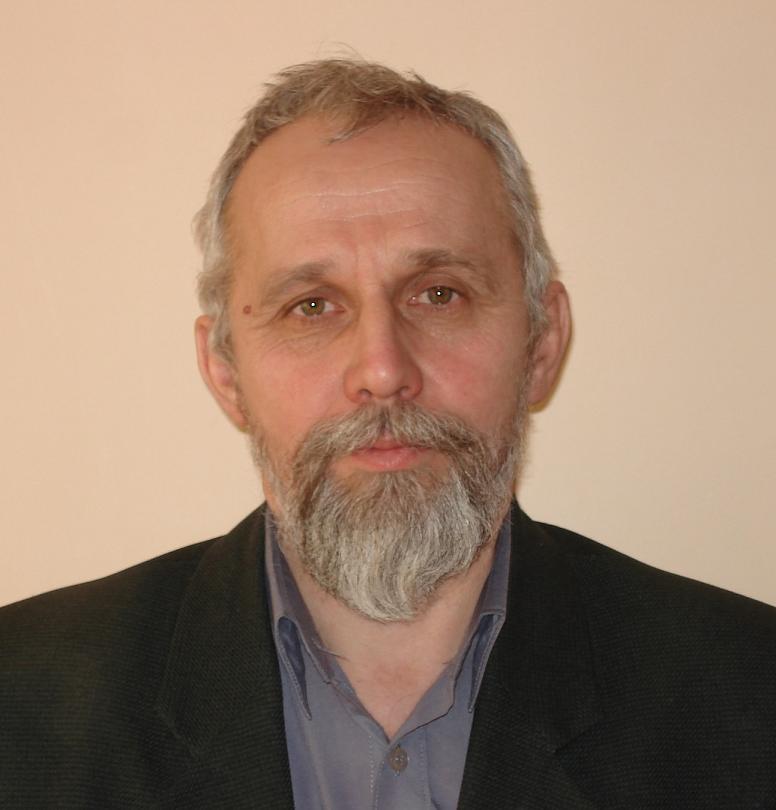
Asian Journal of Physics (ISSN
0971-3093) Vol 24, No 8, 2015 will be an
special issue
on
Constituents of Interstellar
Medium
Guest Edited by: B.G. Anandarao and Shantanu Rastogi
Interstellar medium (ISM) is, as the very name implies, the space between the stars in a Galaxy. On the macroscopic level the ISM consists of giant molecular clouds and diffuse, gaseous nebulae. On the microscopic level the constituents of interstellar matter consist of ionized and neutral atoms, molecules and solid state particles or dust grains. Star formation occurs in the ISM when giant molecular clouds collapse under self-gravity; while the subsequent stellar evolution leads to mass loss and ejection of enriched matter back to the ISM. New stars are formed again from the enriched ISM. This cyclical process of star formation and evolution contributes to the enrichment and chemical evolution of the Galaxy. ISM is therefore one of the most important aspects of Astronomy and Astrophysics and the significance of its investigation can hardly be over-emphasized.
The physical conditions of the space between the stars vary from very cold dense environment (such as molecular clouds) to hot tenuous plasma (such as the supernova remnants that represent the ejected matter of massive stars and inner regions of planetary nebulae that represent the ejected matter of Sun-like stars). The gaseous and dusty matter in the ISM cause extinction (absorption and scattering) of the star light at different wavelength regions depending upon the physical conditions of the absorbing and/or scattering matter. While gaseous matter accounts for extinction in the shorter wavelengths, dust particles are responsible for that in the longer wavelengths. It is essential therefore to know exactly what type of dust grains cause extinction and how the extinction as a function of wavelength varies in different lines of sight.
A variety of molecules and solid state particles or dust grains have been discovered in the ISM thanks to a number of excellent ground-based and space-borne spectro-photometric observations. More complex molecules await detection. Especially of interest are the organic molecules that may have relevance to the life forming molecules. It is important to probe the conditions under which these constituents form and evolve.
The special issue on “Constituents of Interstellar Matter” is being brought out as an attempt to provide a glimpse of the afore-mentioned phenomena highlighting the current excitement and future promise. The issue includes both theoretical and observational aspects of the ISM as well as laboratory experimental work being done to identify unknown features found in several astronomical objects and to synthesize already identified molecules in order to establish possible physical conditions of their formation. The volume is being brought out keeping in view of both the active researchers in the field as well as students of astrophysics.
B.G. Anandarao is currently an Honorary Professor in the Astronomy and Astrophysics Division, Physical Research Laboratory since his superannuation as a Senior Professor. He obtained his Masters degree in Science in 1971 from the Andhra University, Visakhapatnam and PhD from Physical Research Laboratory for his thesis on “Dynamics of Equatorial Ionosphere”. He worked in his early post-doctoral research career at the Observatoire de Meudon, France in the field of Far-infrared Astronomy. Then in 1979 he joined the Infrared Astronomy Group at PRL as a faculty member. His interests are in the fields of star formation and stellar evolution, optical and infrared spectroscopic instrumentation as well as in the field of the earth’s upper atmosphere. He has about 120 publications to his credit. He had served during 2001-2005 as the Chairperson of the Astronomy & Astrophysics Division of PRL. He had been on the Editorial Board of the Journal of Astrophysics and Astronomy published by the Indian Academy of Sciences for two terms. He had also served as an Executive Member of the Astronomical Society of India (ASI). He is a member of the International Astronomical Union (IAU).
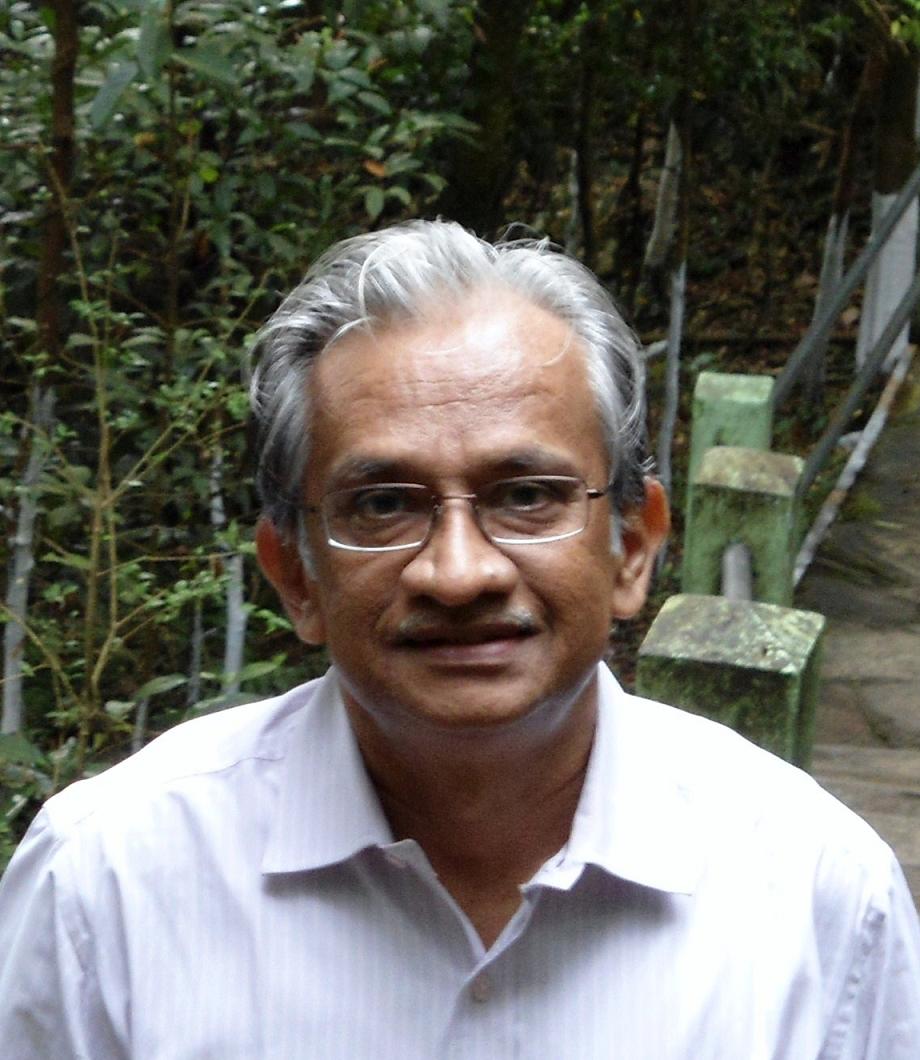
Shantanu
Rastogi is currently working as a Professor in the
Department of Physics, Deen Dayal Upadhyay University, Gorakhpur.
He did his M.Sc. in 1988 from Indian Institute of Technology,
Kanpur. He did his Ph.D. from Lucknow University in 1993 and joined
the University as a lecturer before moving to Gorakhpur University.
He is an Alexander von Humboldt fellow and had worked at the
University of Jena, Jena, Germany. His research interests
include vibrational spectroscopy of molecules of astrophysical
relevance, in particular infrared emissions from polycyclic
aromatic hydrocarbons (PAHs). He has about 40 publications to his
credit. He is presently a member of the editorial board of the
Bulletin of Astronomical Society of India.
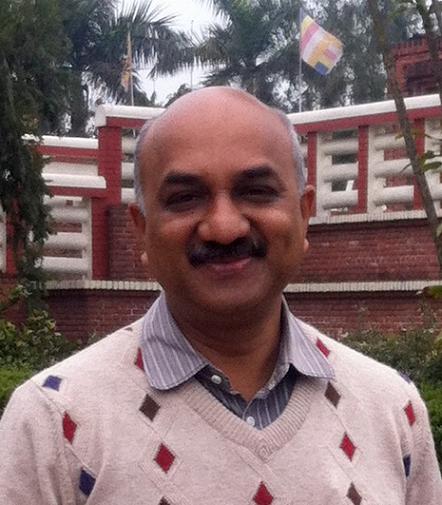
Asian Journal of Physics (ISSN 0971-3093) Vol
24, No 6, 2015 will be an special
issue
on
Holography Beyond the Visible
Wavelength Bands
Guest Edited by:
Debesh Choudhury
Call
for Paper
The principle
of holography fetched a Nobel prize to its inventor Dennis Gabor in
1971. It took almost 22 years after the first report of
Gabor's research on wavefront recording and reconstruction
published under the title “A new microscopic principle”
in Nature in 1948. Invention of a coherent source called laser in
1964 opened a new horizon for this subject. Leith and Upatneiks
reported the off axis holography technique in 1964. There is
no looking back after that. Series of research papers were
published in different journals. Now holography is a well
established field of research that found numerous applications in
solving diverse problems of science, technology and medicine.
Holography in the visible wavelengths are more popular than that in
the wavelengths invisible to the human species. Although
there are a plenty of applications of the invisible wavelength
holography techniques, which we often miss in the vast garden
of large number of other research reports. In this special
issue, the Asian Journal of Physics
is making a humble effort to invite research
papers in holography beyond the visible wavelength bands. The
areas of interest include but not limited to microwave
holography, terahertz
holography, infrared holography, ultraviolet holography and
acoustic holography. Full length original

articles and
reviews exploring all aspects of holography in the invisible
wavelength bands are solicited from academicians and researchers.
The manuscript should be prepared in the prescribed format which
can be found in the website of the journal, i.e.,
http://http://asianjournalofphysics.in/. The due date for
submission of manuscript is April **,
2015. All
submissions should be emailed to some@gmail.com by the stipulated
due date.
Dennis
Gabor
1900
– 1979
Asian Journal of Physics (ISSN 0971-3093), Vol 24, No 3, March 2015 will be an Special issue
on
Women in Physics
Guest Editors: Dr. Ekaterina Michonova-Alexova
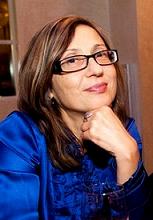
Asian Journal of Physics (ISSN 0971-3093), Vol 24, No 2, Feb 2015 is an Special issue
on
Recent Progress in Information Optics
Guest Editors: Francis Yu and Suganda Jutamulia
Francis T. S. Yu received his B.S.E.E. degree from Mapua Institute of Technology, Manila, Philippines, and his M.S. and Ph.D. degrees in Electrical Engineering from the University of Michigan.
During the period from 1958 to 1965, he was a teaching fellow, an instructor, and a lecturer in the Electrical Engineering Department at the University of Michigan, and a research associate with the Communication Sciences Laboratory at the same University. From 1966 to 1980 he was on the faculty of the Electrical and Computer Engineering Department at Wayne State University. He was a Visiting Professor in the Electrical and Computer Engineering Department at the University of Michigan from 1978-1979. In 1980 he became a Professor in the Electrical Engineering Department at The Pennsylvania State University. He has been a consultant to several industrial and government laboratories. He is an active researcher in the fields of optical signal processing, holography, optics and
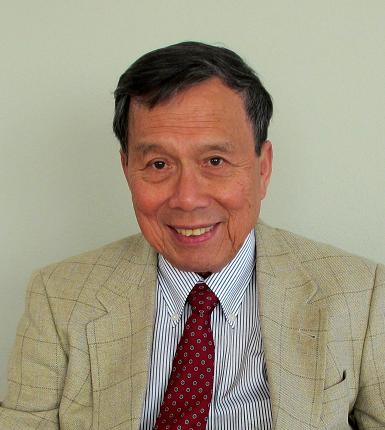
information theory, and optical computing. He has published over 300 refereed papers in these areas. He is a recipient of the 1983 Faculty Scholar Medal for Outstanding Achievement in Physical Sciences and Engineering, a recipient of the 1984 Outstanding Researcher in the College of Engineering, was named Evan Pugh Professor of Electrical Engineering in 1985 at Penn State, a recipient of the 1993 Premier Research Award from the Penn State Engineering Society, was named Honorary Professor in Nankai University in 1995, the co-recipient of the 1998 IEEE Donald G. Fink Prize Paper Award, named Honorary Professor in National Chiao Tung University Taiwan in 2004, and the recipient of the 2004 SPIE Dennis Gabor Award. Dr. Yu retired from Penn State University in 2004.
He is the author and co-author of ten books entitled: (1) Introduction to Diffraction, Information Processing and Holography (translated in Russian), (2) Optics and Information Theory, (3) Optical Information Processing (translated in Chinese), (4) White-Light Optical Signal Processing, (5) Principles of Optical Engineering (with I. C. Khoo) (translated in Chinese), (6) Optical Signal Processing, Computing, and Neural Networks (with S. Jutamulia) (translated in Chinese and Japanese), (7) Introduction to Optical Engineering (with X. Yang) (being translated Korean), (8) Entropy and Information Optics (translated in Chinese) (9) Introduction to Information Optics (with S. Jutamulia and S. Yin), (10) Coherent Photonics (in Russian) (with A. Larkin). MOCKBa Press, Russia, 2007. And he also has contributed several invited chapters in various monographs and books. He has co-edited four books entitled: (1) Optical Storage and Retrieval (with S. Jutamulia), (2) Optical Pattern Recognition (with S. Jutamulia), (3) Photorefractive Optics (with S. Yin), and (4) Fiber Sensors (with S. Yin).
Recently, Dr Yu has joined Asian J Phys as Editorial Board Memebr and editing an special issue. Dr. Yu is a fellow of IEEE, OSA, SPIE, and PSC.
Suganda Jutamulia was born in Indonesia. He received BS degree in physics (1977) from Institut Teknologi Bandung, MS degree in opto-electronics (1980) from Universitas Indonesia, and PhD degree in electronic engineering (1985) from the Hokkaido University, Japan. He was a post-doctorate fellow at the Pennsylvania State University, a principal investigator for small business innovation research at several companies, a manager at Kowa Company Ltd., a senior engineer at Blue Sky Research, and CTO at Newtonics Spectra Inc., prior to serving as an in-house patent agent previously at Oplink Communications Inc. and currently at OmniVision Technologies Inc. He teaches part time at San Jose State University. He is a Professor of Biomedical Engineering at University of Northern California. He has 12 patents, over 125 publications, and 8 books to his credit. He is a fellow of Optical Society of America and SPIE – the International Society for Optical Engineering. He serves in the Editorial Boards, Proceedings of the IEEE, Jan. 2000 – Dec. 2002, and IEEE ACCESS, 2013-2015.
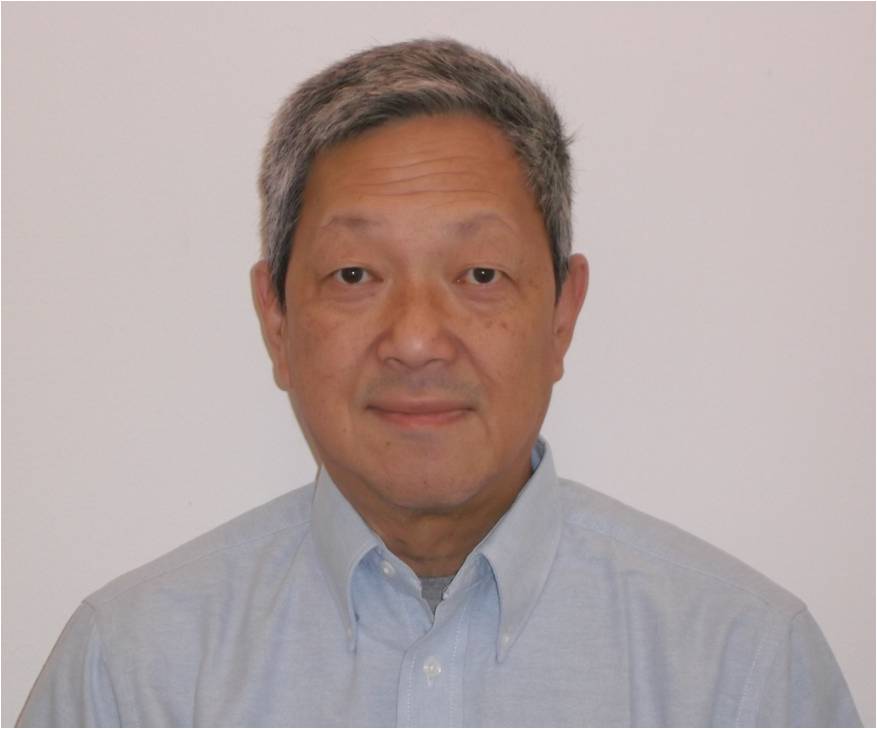
Asian Journal of Physics, Vol 24, N0 1, Jan 2015 is dedicated to Prof G D Baruah
Guest Edited by KPR Nair
Asian Journal of Physics, Vol 23, No 6, Dec 2014 is dedicated to Dr A K Gupta
Guest Editor: V K Rastogi
Asian Journal of Physics, Vol 23, No 5, Nov 2014 is dedicated to Prof S Mohan
Guest Edited by V Arjunan and V K Rastogi
Asian Journal of Physics,Vol 23, No 4, Oct 2014
Guest Editor: Dr. Ekaterina Michonova-Alexova
© ANITA PUBLICATIONS
All rights reserved
Designed & Maintained by
Manoj
Kumar